There are more than 38,000 supermarkets in the U.S. The vast majority of these — over 25,000 — are so-called conventional or traditional markets. The Food Marketing Institute defines these as stores offering a full line of groceries, meat, and produce, and generating annual sales of at least $2 million.
About another 3,500 supermarkets are categorized as specializing in natural and/or gourmet foods. These stores often do particularly good jobs with fruits and vegetables, and their knowledgeable customers know how to pick the best produce.
People shop for food in all kinds of places, of course. Some never stray further than their local all-purpose Kroger, Publix, Ralphs, or Stop & Shop. Others seek out hard-to-find comestibles in small boutique shops, or patronize big Asian, Italian, or Latino markets.
Still others — a lot of others — buy their food at Walmart (which is, along with everything else, America’s largest supermarket by far in both number of units and revenue) or other big-box stores. As Whole Foods and other chains have too few stores comparatively, Walmart continues to extend its grocery dominance.
And many, of course, spend their money at all of the above, depending on what they’re looking for. A business school study of grocery store customer loyalty last year found that 83% of shoppers regularly visited between four and nine stores for groceries over a 12-month period.
Among the factors that determine where people buy their food are convenience, store organization, cleanliness, price, shopper rewards programs, and availability of specific products — as well as such social issues as how a chain treats its employees or how the parent company is perceived to behave in general. (It’s interesting to note that no supermarket chains are ranked among companies people want to be part of if you look at employees’ satisfaction — these are the best companies to work for.)
24/7 Tempo has assembled a list of some of the most popular grocery stores around the country, based on the number of Yelp reviews they’ve received and the overall scores Yelp users have given them.
Not surprisingly, these include a wide range of places, from Trader Joe’s to Walmart, from conventional supermarkets to Asian and Italian specialty stores. All, it seems safe to assume, provide shoppers with high-quality things to eat and drink. And people — lots of people — love every one of them.
24/7 Tempo compiled this list by considering the total number of Yelp reviews and the cumulative scores given to almost 350 of the most popular supermarkets and other grocery stores around the country. Stores that were primarily delis or restaurants were excluded, even if they stocked a number of food products for retail sale. Because many large chains were widely reviewed and highly ranked — including Whole Foods, Trader Joe’s, Walmart, and Costco — only the top-scoring representative of each chain was included. Yelp usage varies considerably according to various factors. For example, for whatever reason, Yelp users registered their opinions about grocery stores in California far more frequently than in other states — a fact reflected by the preponderance of entries from that state on this list.
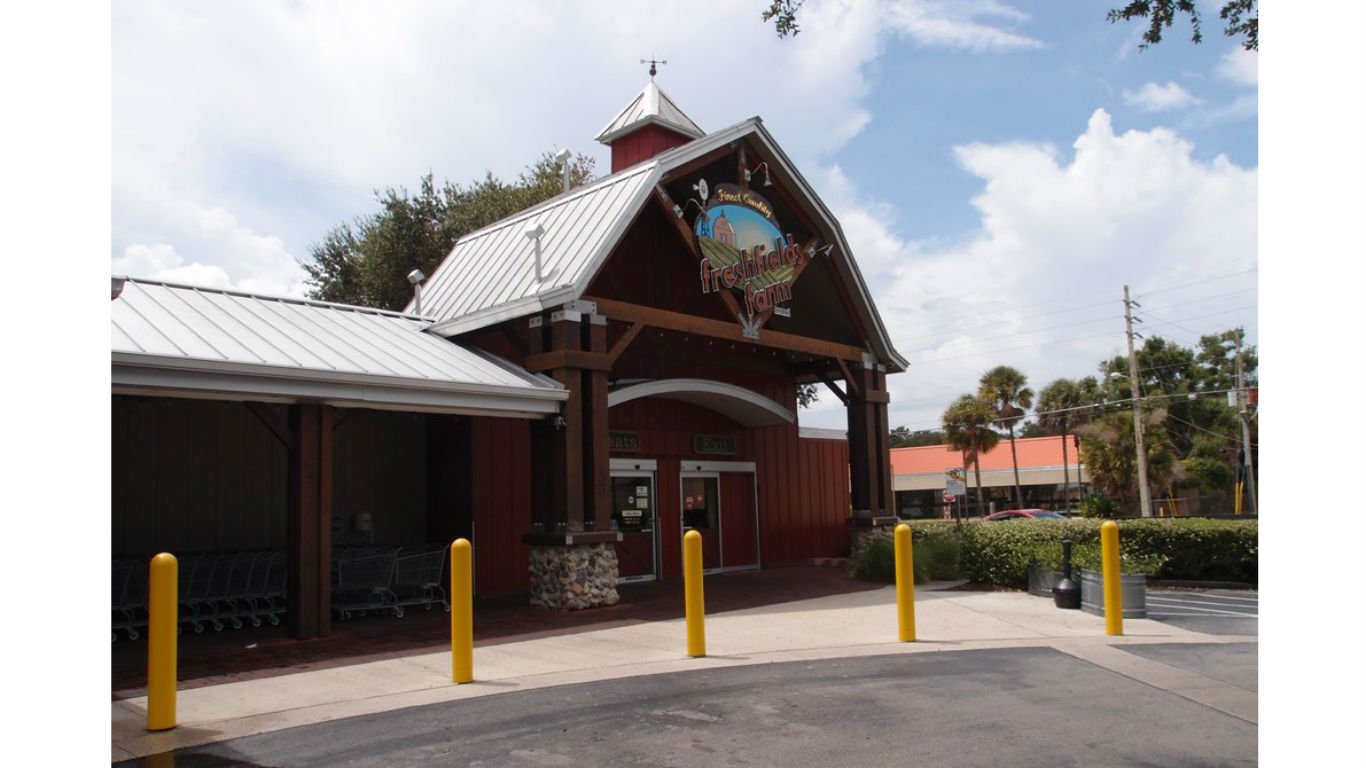
30. Freshfields Farm
> Location: Orlando, Florida (population: 269,414)
> Total Yelp reviews: 334
> Avg. Yelp rating: 4.5
Freshfields isn’t a full-service supermarket, but it’s known for selling some of the best meats and produce around, both in Orlando and in its Jacksonville location. Among the offerings are Private Stock choice Midwestern and grass-fed Georgia beef, all-natural chicken, a range of deli meats, and a wide range of produce both local and national, organic and conventional.
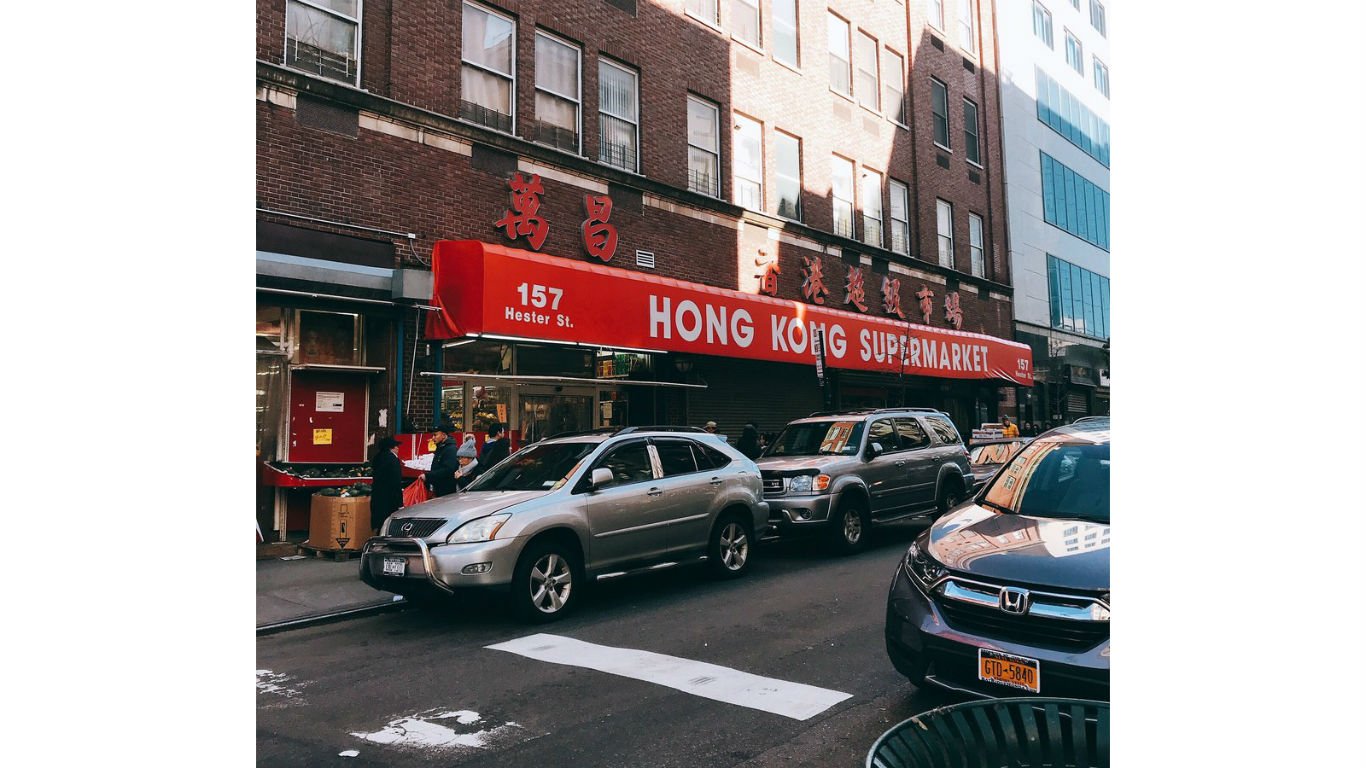
29. Hong Kong Supermarket
> Location: New York, New York (population: 8,560,072)
> Total Yelp reviews: 341
> Avg. Yelp rating: 4.0
Known as the busiest supermarket in New York City’s Chinatown, this two-level treasure house of ingredients both fresh and packaged, for every kind of Asian cuisine, is known for its immense selection and its low prices. “If you’re looking to cook an Asian meal…” wrote one Yelper, this place “has everything and anything you could ever need.”
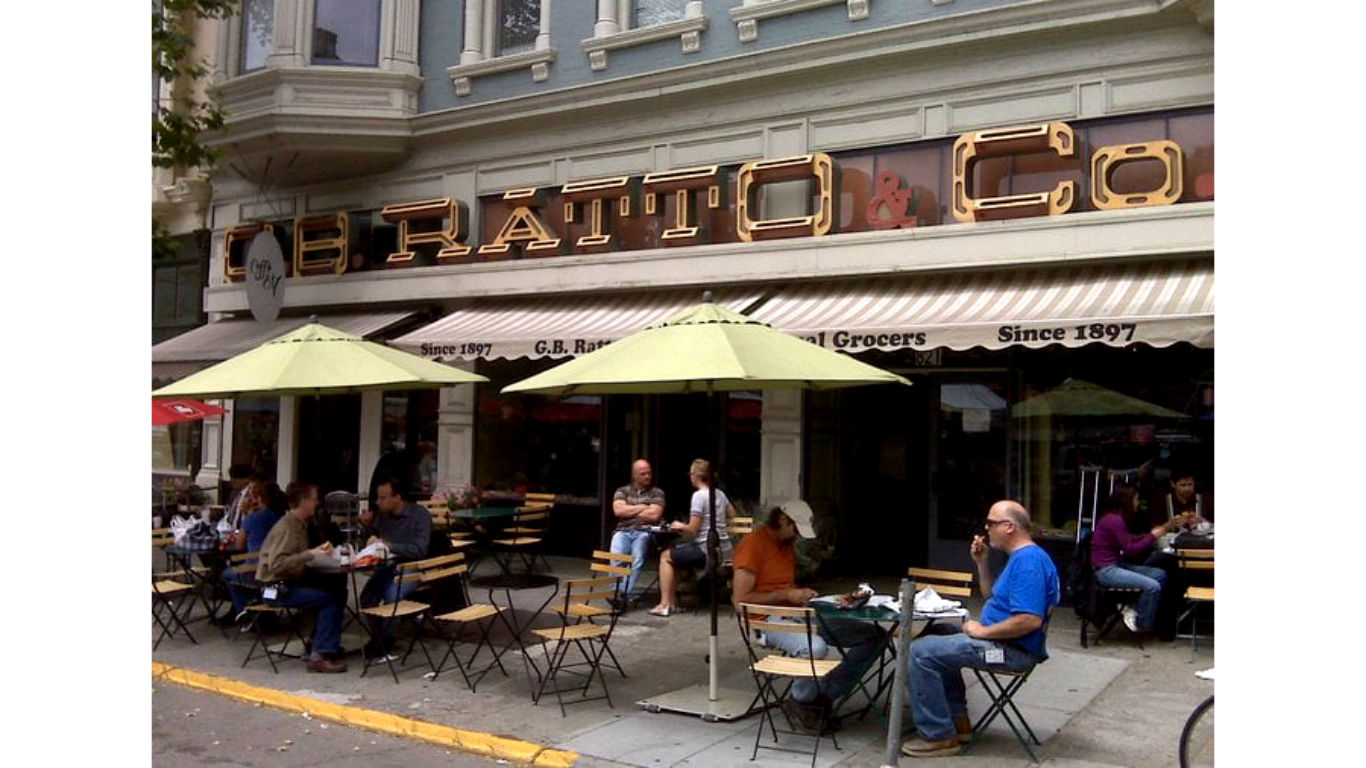
28. Ratto’s International Market & Deli
> Location: Oakland, California (population: 417,442)
> Total Yelp reviews: 355
> Avg. Yelp rating: 4.0
This fourth-generation family-owned market is an Oakland institution. From bulk spices to incredible cheeses and from a panoply of olives and olive oils to a wide choice of pastas, this is a sort of Italian superstore (with a good choice of Spanish and other international items, too). An ample selection of deli sandwiches, salads, and prepared dishes is also on offer, to eat here or take home. “Everything here is FRESH!” enthused one fan on Yelp.
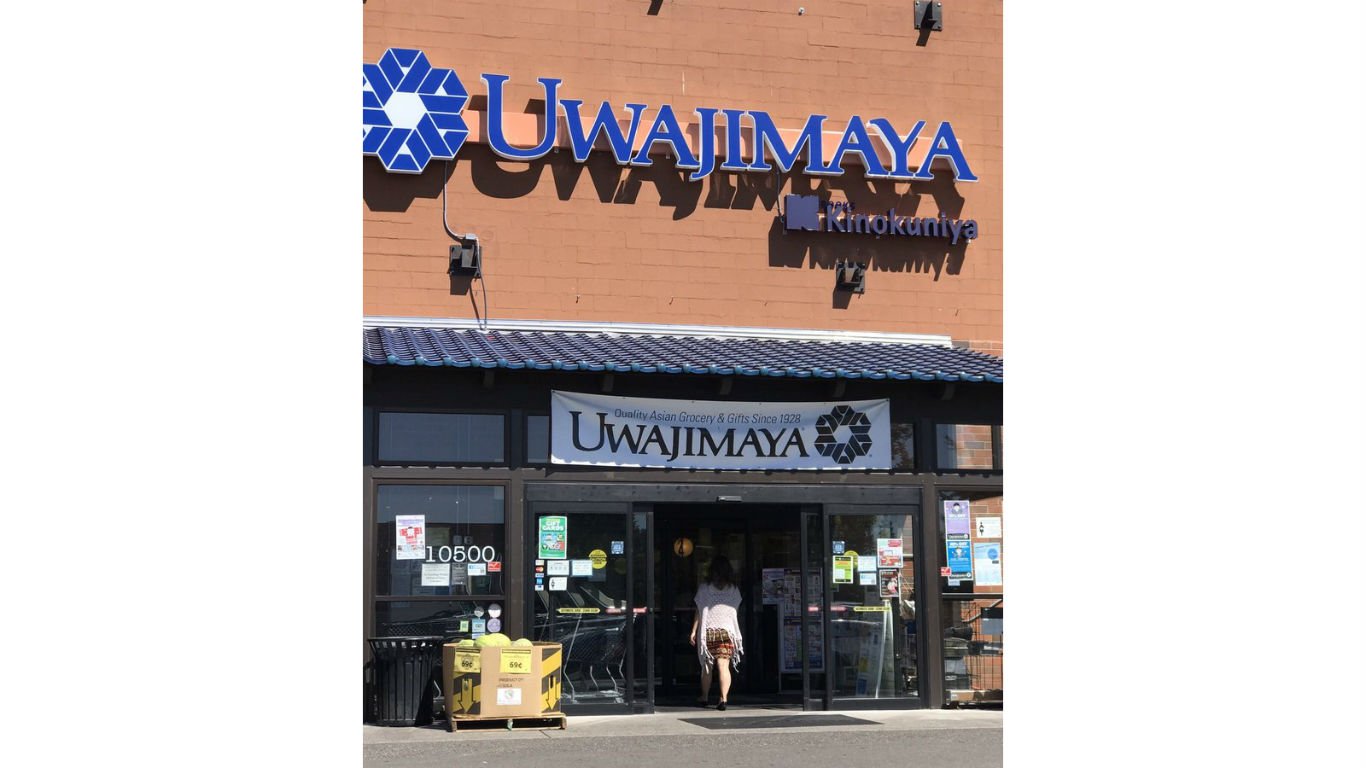
27. Uwajimaya
> Location: Beaverton, Oregon (population: 95,710)
> Total Yelp reviews: 411
> Avg. Yelp rating: 4.0
This family-owned Asian specialty supermarket has four Pacific Northwest locations. This Portland area branch offers the chain’s usual large choice of Asian groceries; fresh seafood, meat, and produce; gifts; and both hot and prepared to-go foods. An added bonus, though, is a Kinokuniya Bookstore — a branch of Japan’s largest bookstore chain.
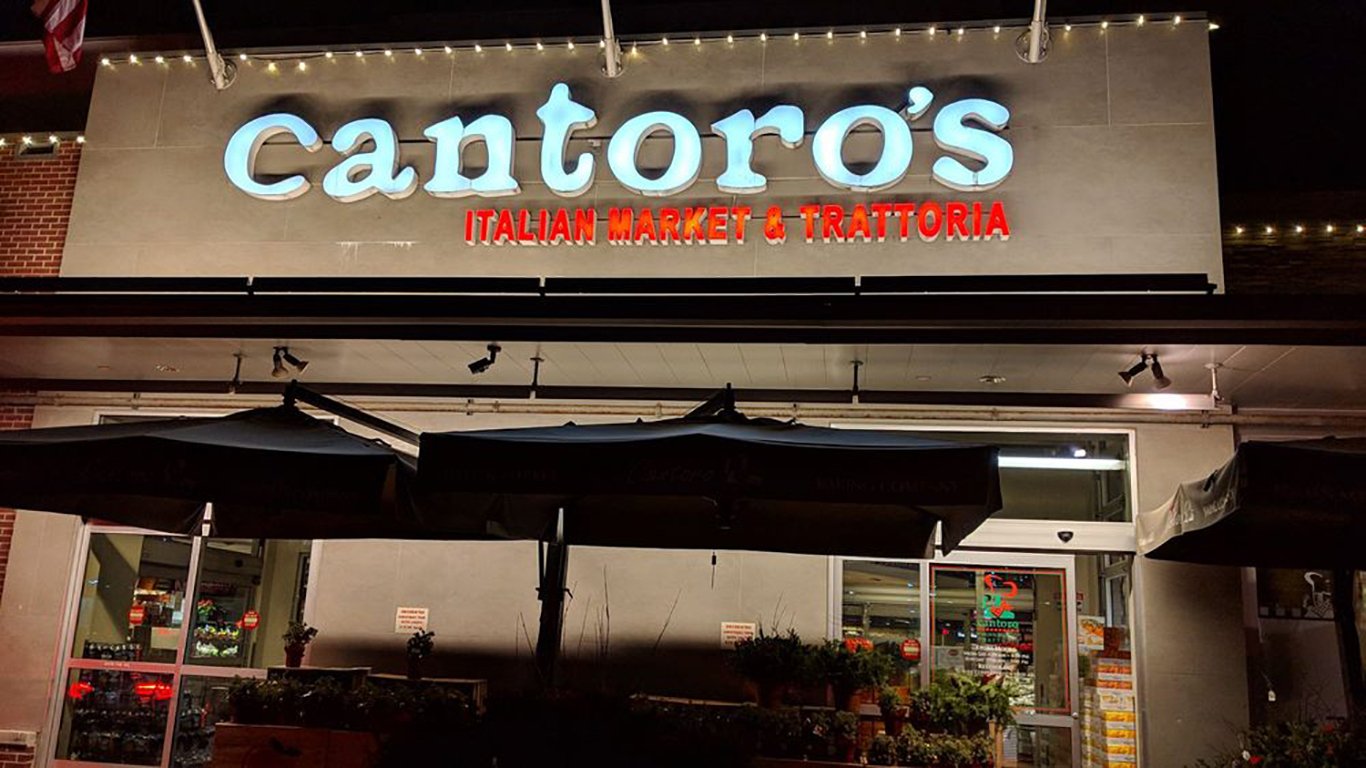
26. Cantoro Italian Market
> Location: Plymouth, Michigan (population: 9,005)
> Total Yelp reviews: 427
> Avg. Yelp rating: 4.0
A 55,000-square-foot establishment in the Detroit metropolitan area (there is a second location, too), said to have been inspired by “the famous Italian markets in Rome, Venice and Palermo,” Cantoro is an Italian culinary mecca with a restaurant attached. There’s plenty of fresh produce as well as huge selections of coffee and tea, cheeses and other dairy products, baked goods, pastas, kitchenware, and wine, beer, and liquor. A visit is a way, wrote one Yelper, “to bring home a taste of Italy at a fraction of a plane ticket.”
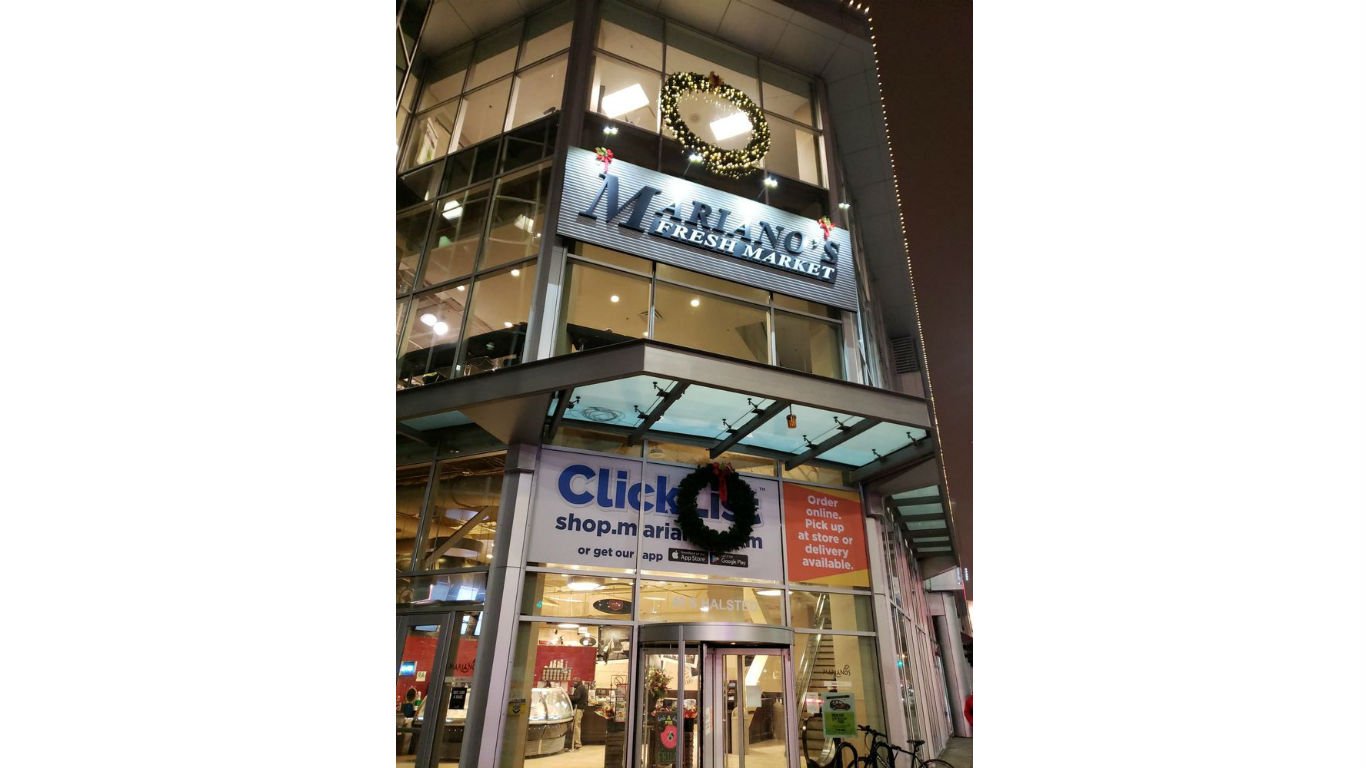
25. Mariano’s – West Loop
> Location: Chicago, Illinois (population: 2,722,586)
> Total Yelp reviews: 436
> Avg. Yelp rating: 3.5
This full-scale Italian-accented market chain promises “the freshest high-quality foods from just about everywhere in the world…be it kosher bagels from down the street, or mozzarella from Caserta, Italy.” There are numerous locations of this Kroger-owned store around the Chicagoland area; this one has wine, sushi, and oyster bars among other non-grocery attractions. Some Yelp reviews give this branch low marks, but to others it’s “fantastic” and a “go-to grocery store.”
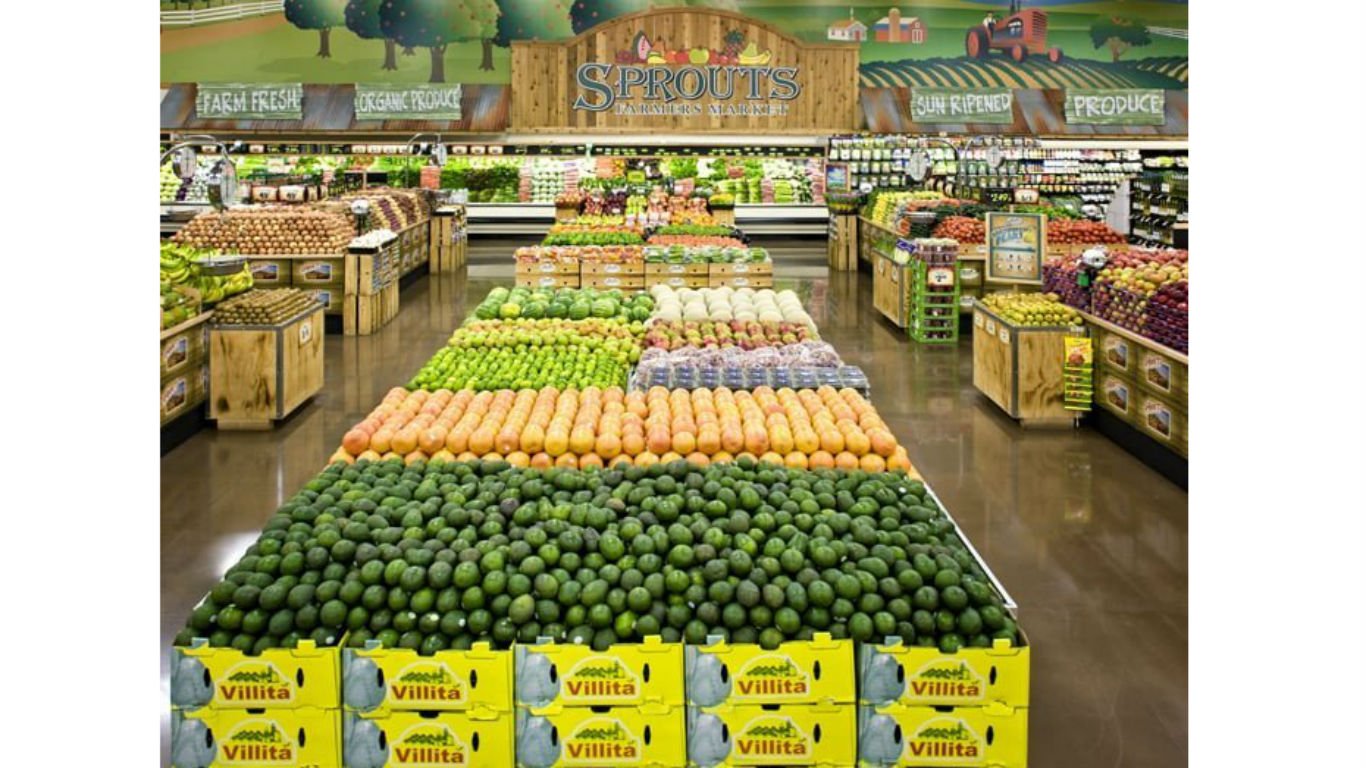
24. Sprouts Farmers Market
> Location: Sunnyvale, California (population: 151,565)
> Total Yelp reviews: 446
> Avg. Yelp rating: 3.5
An Arizona-based chain with stores in some 20 states, Sprouts specializes in organic and natural foods, including produce, meats and seafood, baked goods, dairy products, frozen foods, and body care and household items. Yelpers compare this branch to Whole Foods, but note that it’s less expensive and with better customer service.
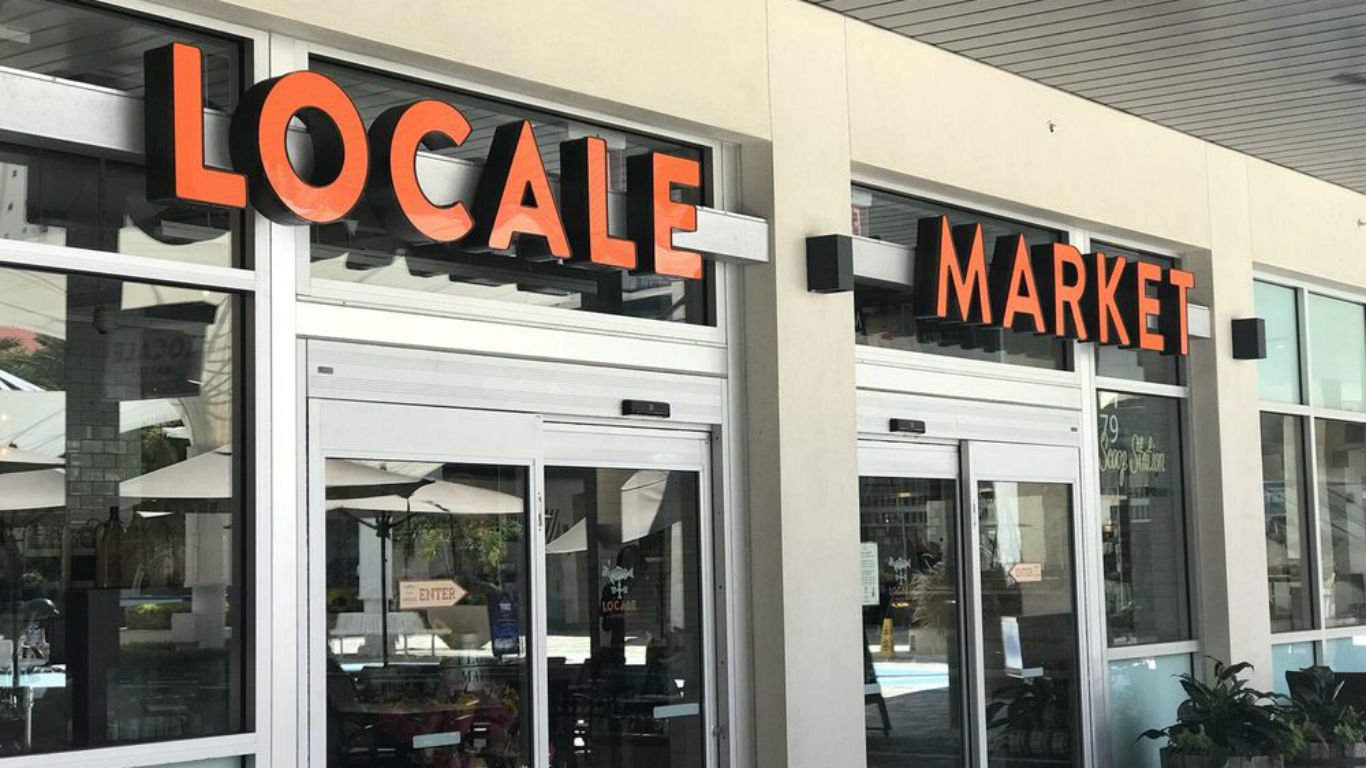
23. Locale Market
> Location: Saint Petersburg, Florida (population: 263,255)
> Total Yelp reviews: 475
> Avg. Yelp rating: 4.0
“If only I lived closer,” moaned one reviewer on Yelp of this “always clean and bright” “culinary experience” created by noted chefs Michael Mina and Don Pintabona. Cheese, charcuterie, meats, seafood, produce, aisles and aisles of specialty packaged goods, a ramen bar, burgers and pizzas, wine… There’s not much this place doesn’t have.
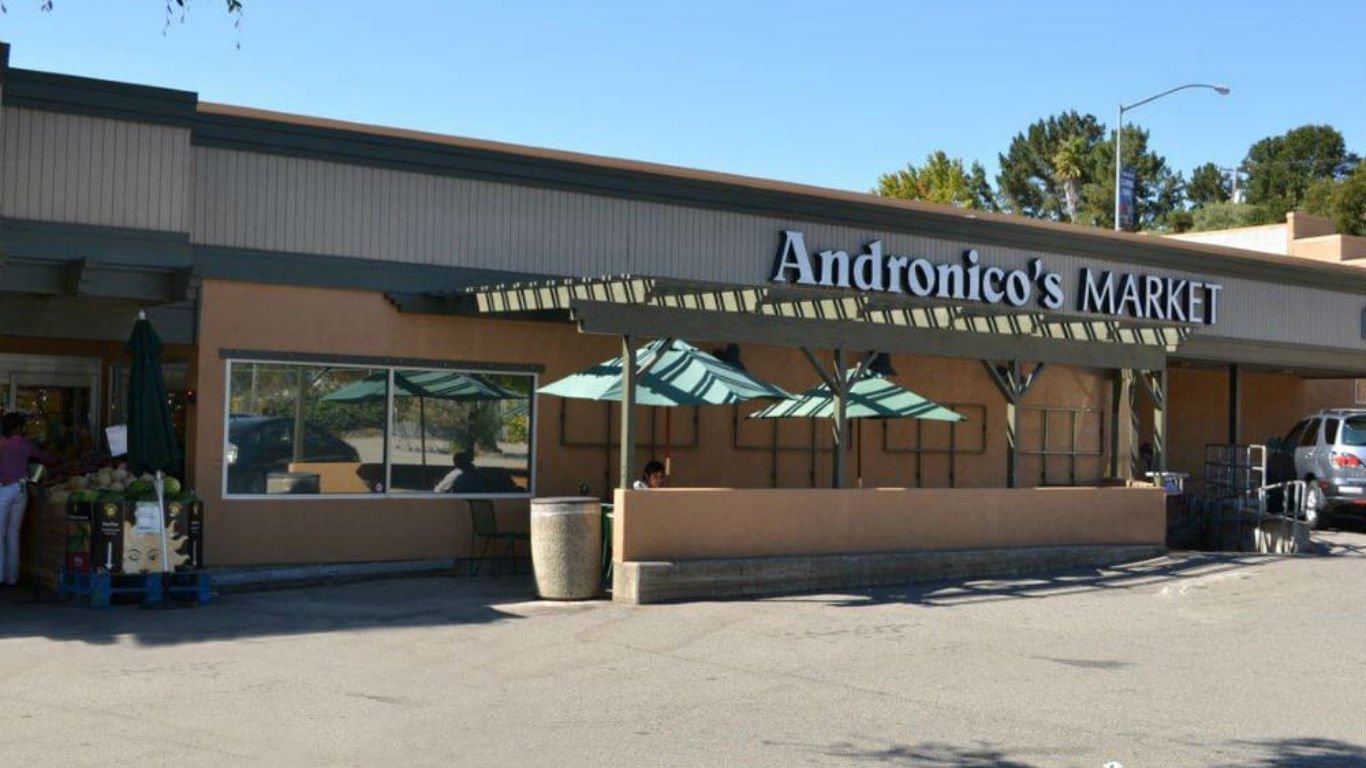
22. Andronico’s Community Market
> Location: San Francisco, California (population: 864,263)
> Total Yelp reviews: 532
> Avg. Yelp rating: 3.0
Describing itself as an “eclectic, upbeat neighborhood hub for feeding a healthy lifestyle,” Andronico’s is a San Francisco favorite (there is a second location in Monterey). Prepared foods, fruits and vegetables, meats and cheeses, seafood, flowers, alcoholic beverages, grocery staples, and all the rest are found here. “I would probably compare Andronicos to Whole Foods,” wrote one aficionado on Yelp, “but Andronicos is still just a little better…”
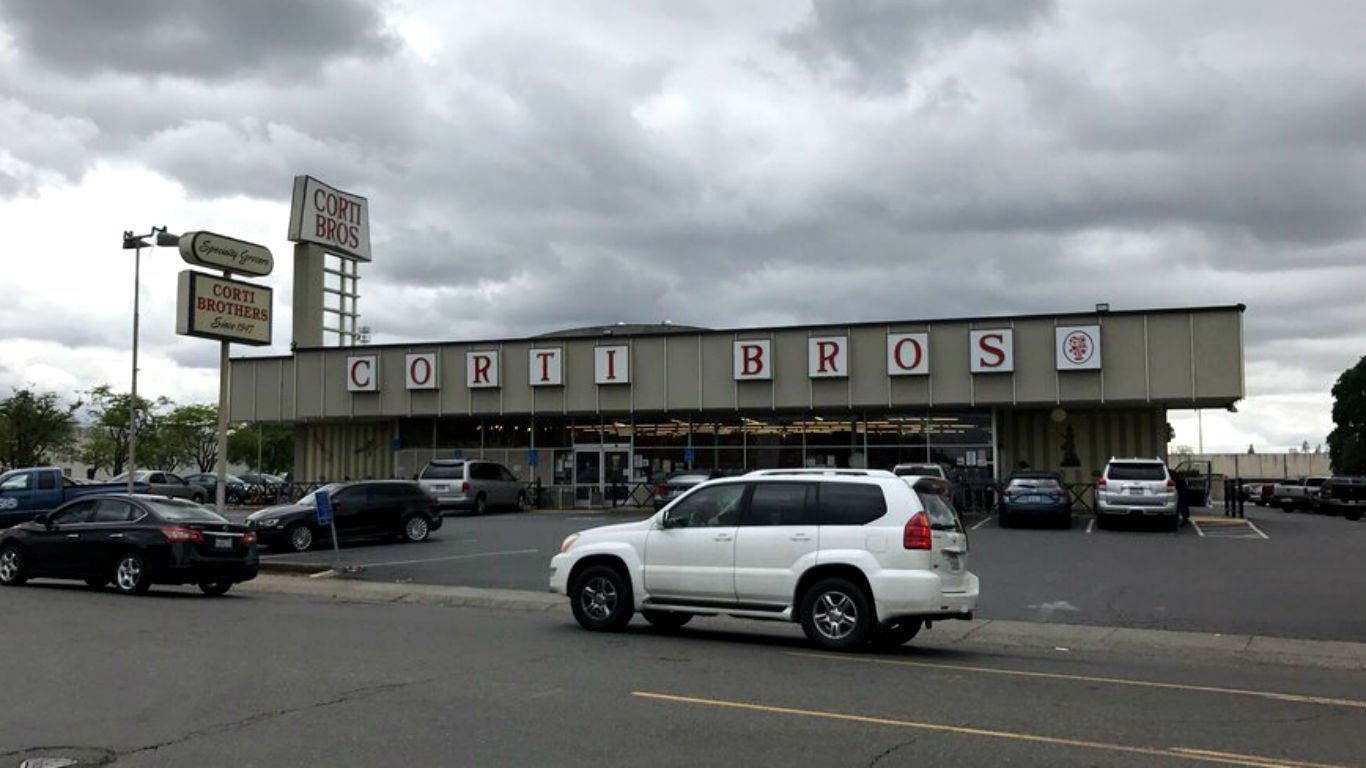
21. Corti Brothers
> Location: Sacramento, California (population: 489,650)
> Total Yelp reviews: 568
> Avg. Yelp rating: 4.5
This classic grocery store in California’s capital city, family-owned since 1947, has anything you’d go to any other grocery store for. But thanks to proprietor Darrell Corti, it also sells amazing wines and spirits from around the world, some of them available here exclusively, as well as such specialty items as rare Chinese teas and Japanese soy sauces, dried fruits and nuts, premium canned fish from Spain, and exotic coffees. “Wow, what an awesome place,” Yelped a fan from San Francisco.
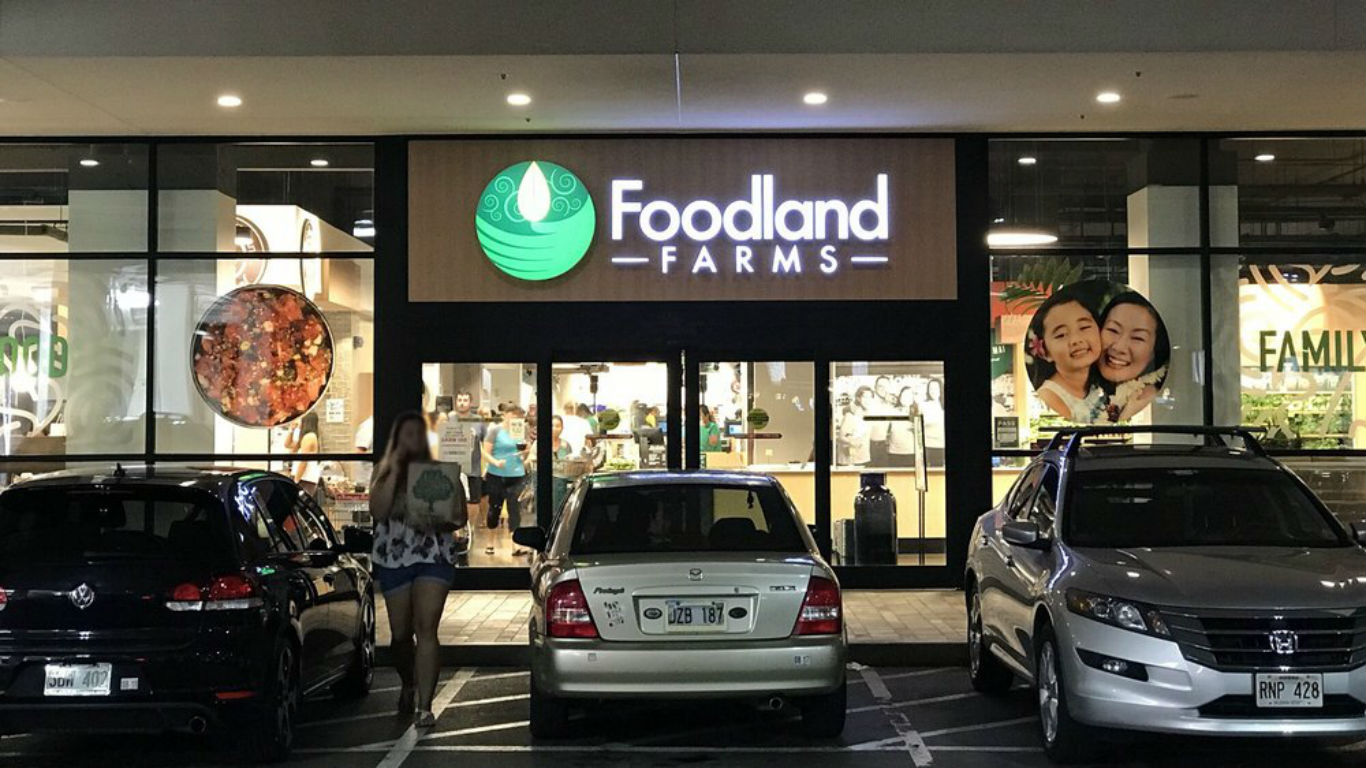
20. Foodland Farms
> Location: Honolulu, Hawaii (population: 351,792)
> Total Yelp reviews: 585
> Avg. Yelp rating: 4.0
The Ala Moana location of the Foodland chain, which operates 32 stores around Hawaii, is “A really nice grocery store,” according to a visitor from Virginia on Yelp, with “[s]o many fresh fruits, quality meats, fresh veggies, baked goods galore, poke, sushi, snacks, etc.” Local products like King’s Hawaiian rolls, Maui Style Potato Chips, and Kona coffee are among the featured items.
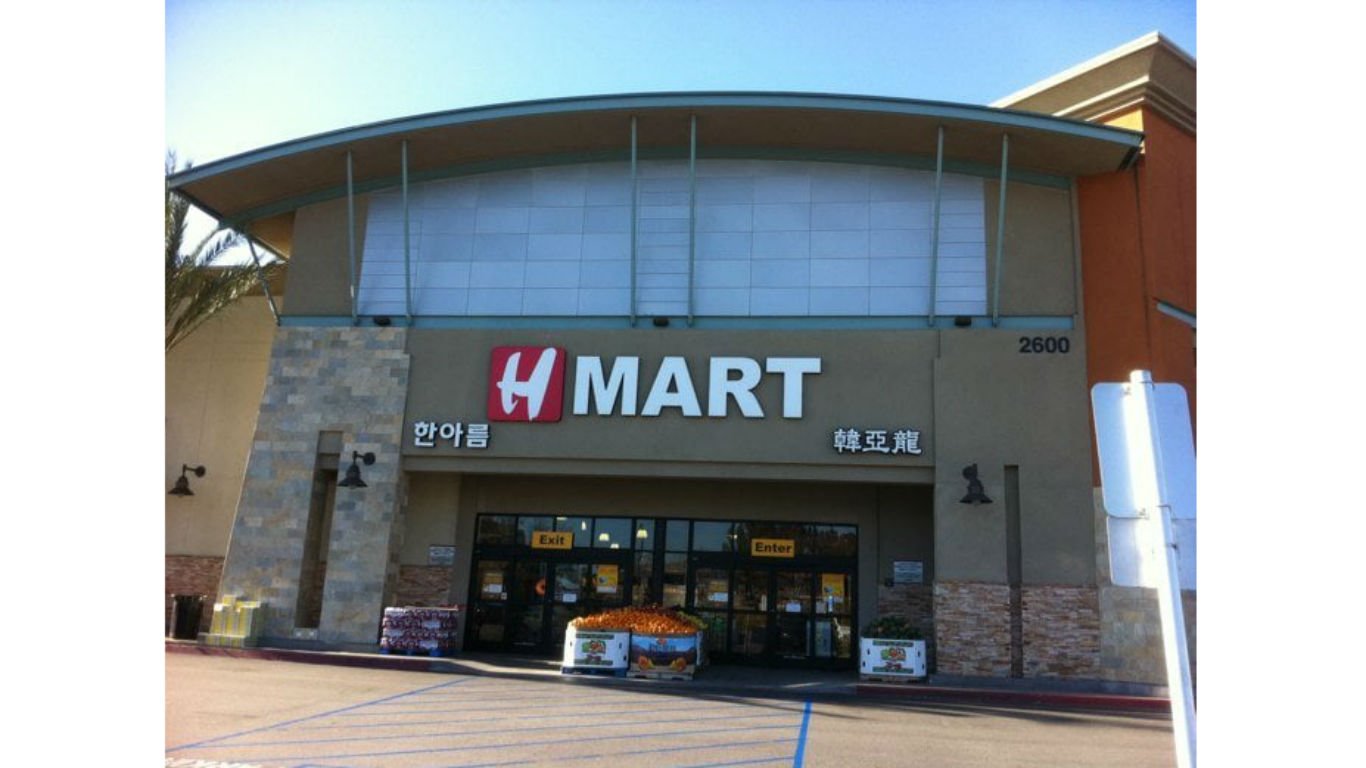
19. H Mart – Irvine
> Location: Irvine, California (population: 256,877)
> Total Yelp reviews: 591
> Avg. Yelp rating: 3.5
A Korean food court grocery store that’s part of a nationwide chain, the Irvine H Mart wins Yelp praise as “top notch” and “great!” One reviewer made special note of the produce section, “like a forest,” with “[t]ons of vegetable varieties that make you want to stock up your refrigerator at home.” Another, who admits that he really enjoys kimchi, proposed that “you could call this place kimchi heaven!”
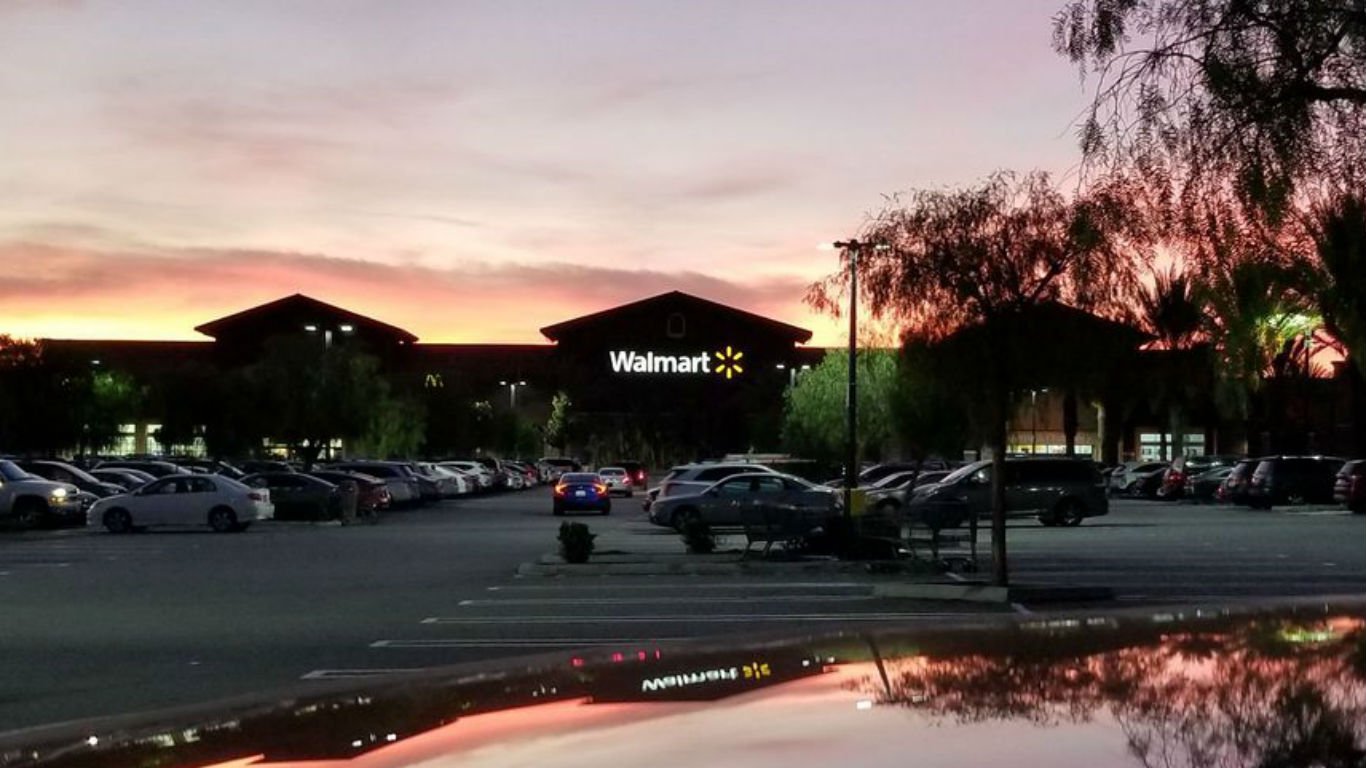
18. Walmart Supercenter
> Location: Rosemead, California (population: 54,615)
> Total Yelp reviews: 592
> Avg. Yelp rating: 2.0
Walmarts are all over the place, of course; this location, in a community just east of Los Angeles, is one of 311 in the Golden State alone. Yelp reviews are almost universally negative, mostly complaining about the non-existent customer service. The fact that almost 600 people have posted reviews of this store, though, suggests that shoppers go there anyway, and even the critics mention the low prices and large selection — and Walmart doesn’t sell far more groceries than anyone else in America for no reason.
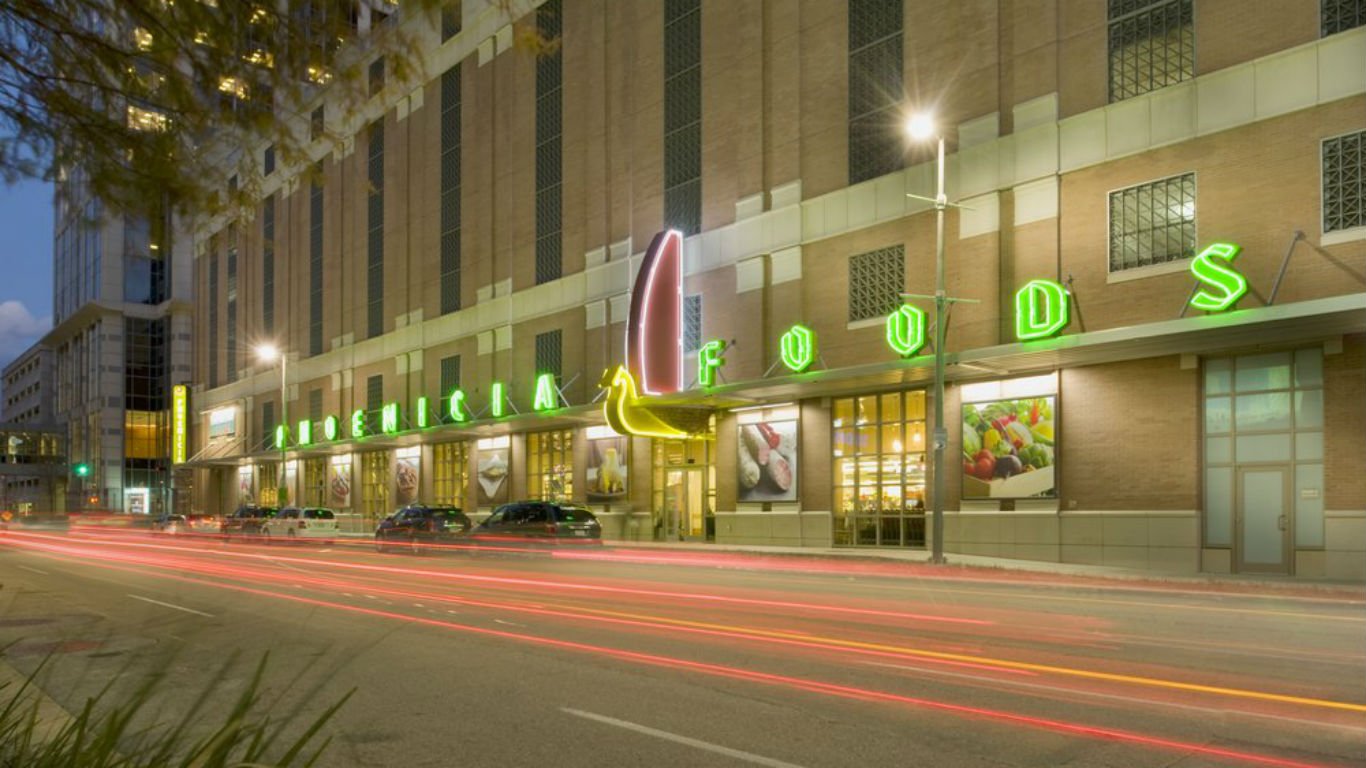
17. Phoenicia Specialty Foods
> Location: Houston, Texas (population: 2,267,336)
> Total Yelp reviews: 604
> Avg. Yelp rating: 4.5
Originally a small Mediterranean-style deli and market in another location, Phoenicia is today a 55,000-square-foot international food market carrying, they say, “more than 15,000 products with down-to-earth pricing from more than 50 countries.” These include artisanal breads, meats and cheeses, seafood, exotic produce, prepared foods, and boutique wines and beers. “GREAT customer service…Lots of international food selection…awesome baked goods…hot food line…big salad bar…even bigger olive bar…” enthused one local customer on Yelp.
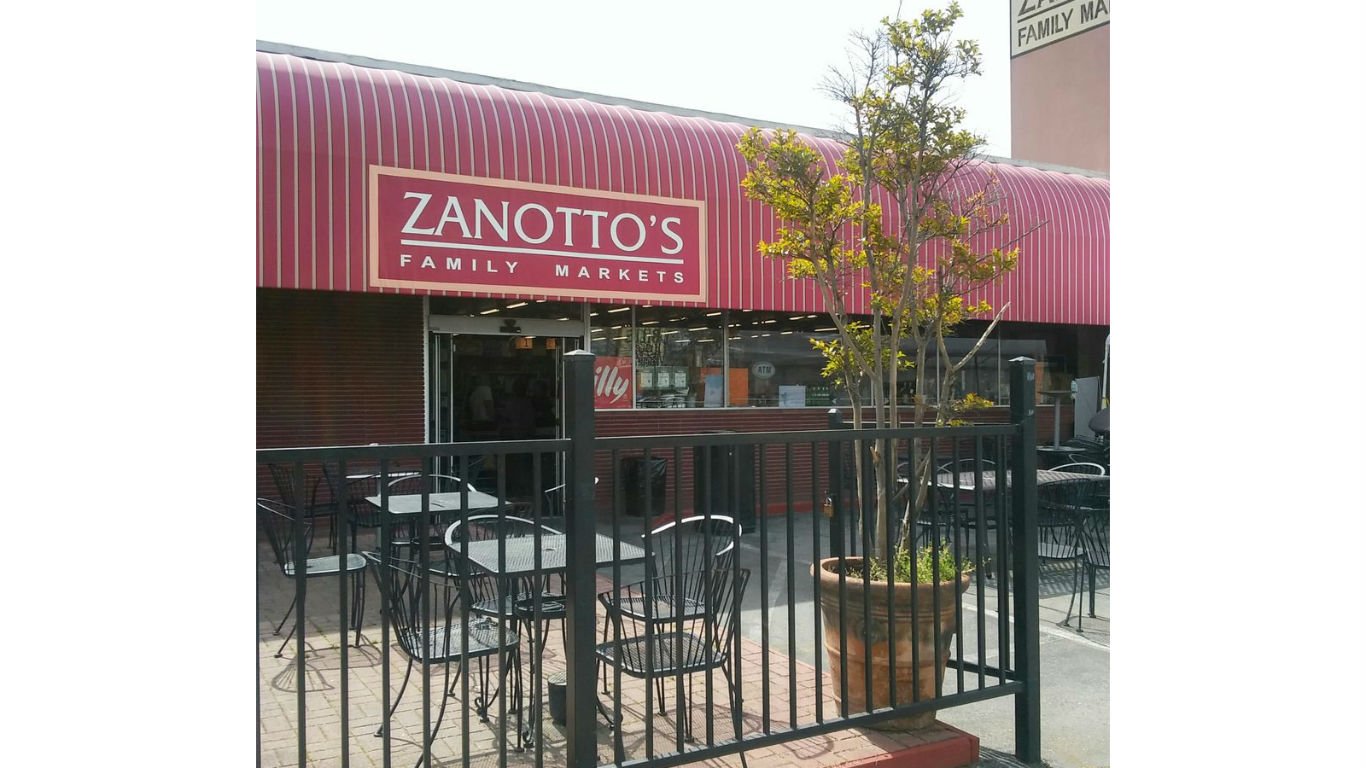
16. Zanotto’s Family Market
> Location: San Jose, California (population: 1,023,031)
> Total Yelp reviews: 620
> Avg. Yelp rating: 4.5
There are five independently owned and operated Zanotto’s in the San Jose area, known for their deli sandwiches as well as for their well-stocked shelves and cases. Why do people who review this one on Yelp like it so much? “This market has everything!” “[B]adass deli section.” “[S]o many things in the beer cooler that are hard of generally impossible to get…” “I can pick up nearly anything that I can’t pronounce in the store and will likely enjoy it.”
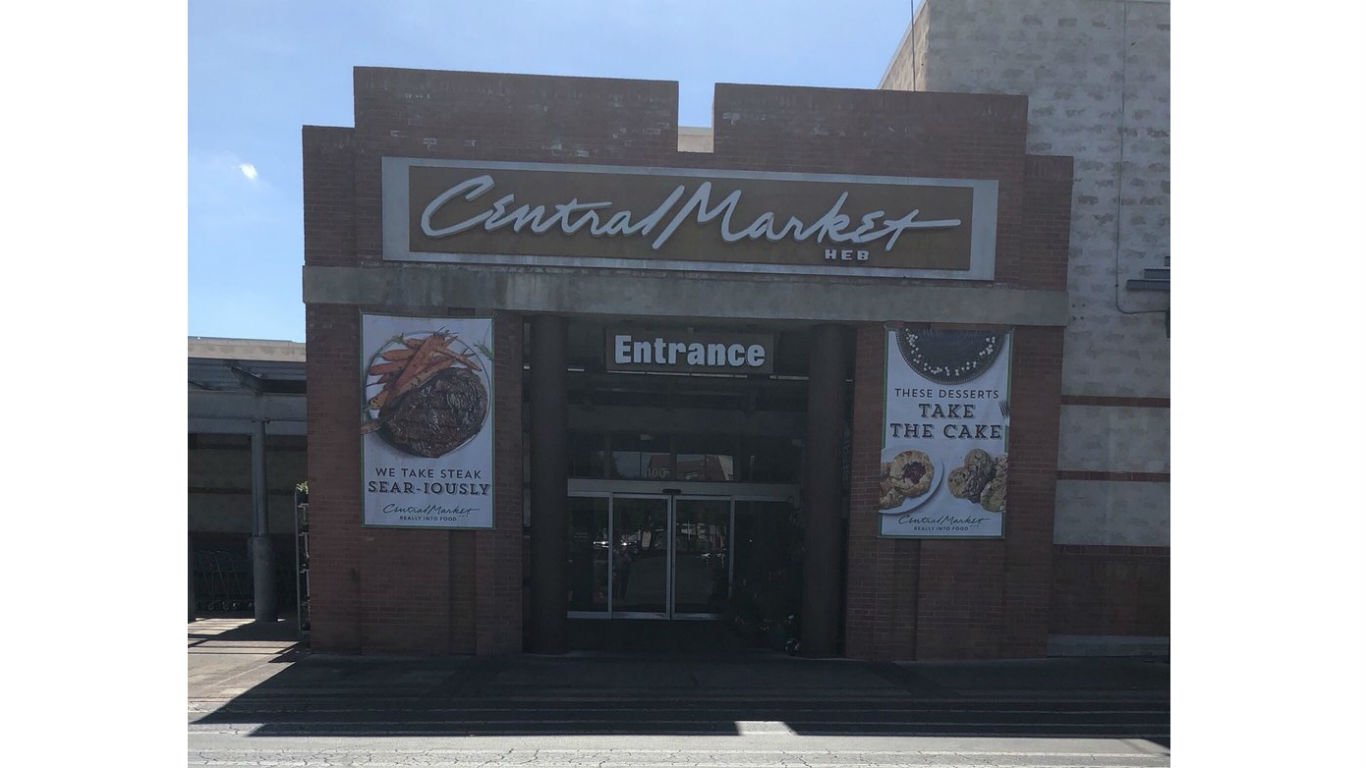
15. Central Market – North Lamar
> Location: Austin, Texas (population: 916,906)
> Total Yelp reviews: 621
> Avg. Yelp rating: 4.0
Austin has spawned not one but two great supermarket chains — Whole Foods and the much smaller Texas-only Central Markets (part of the massive H-E-B Grocery Company). Central Market opened in 1994, two years after Whole Foods went public. This is the original location. It’s not as slick as Whole Foods, but has a wider range of Texas-made products and a better wine selection. “I am in love with this grocery store, and no other grocery store can ever compare to this,” wrote one local on Yelp. The cooking classes are famous, too.
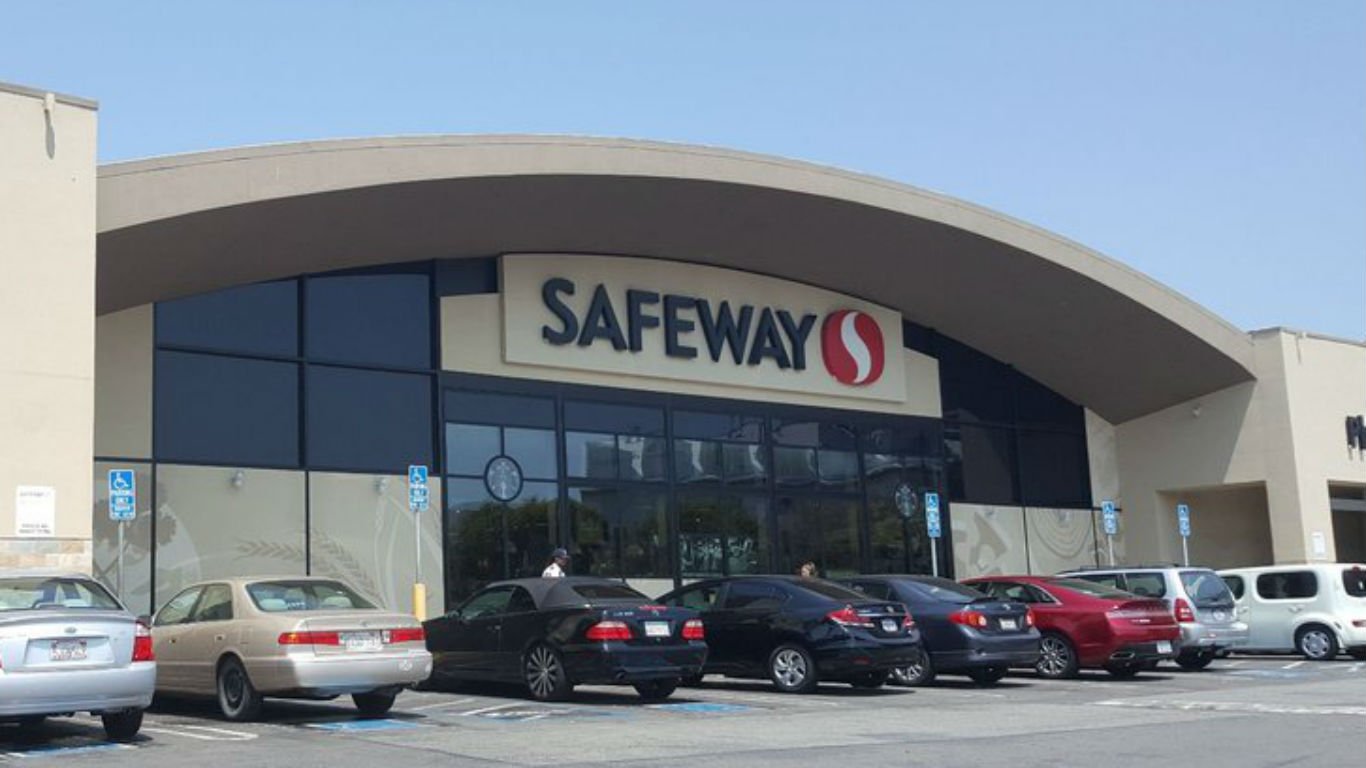
14. Safeway
> Location: San Francisco, California (population: 864,263)
> Total Yelp reviews: 630
> Avg. Yelp rating: 2.5
A subsidiary of Albertsons, now with a much smaller footprint than it once had, Safeway is a classic supermarket chain. The Market Street location, like all the others, sells everything you’d expect — meats and seafood, produce, baked goods, canned goods, dry goods, deli items, pet food, and just about anything else you’d want when you go to the market. Yelpers note that they used to feel that the place was a bit run down and unsafe, but that it has turned around. “More selection and a bit of a makeover” have helped.

13. Russo’s
> Location: Watertown, Massachusetts (population: 35,756)
> Total Yelp reviews: 650
> Avg. Yelp rating: 4.5
With an extensive produce section featuring fruit and vegetables from around New England and further afield; more than 500 cheeses from around the world (and the region) and many cured meats imported from Italy; an array of homemade breads and pastries; and even a full-scale garden center — Russo’s is a must for food-lovers in the Boston area. “If you go once you’ll go again and again,” Yelps one fan.
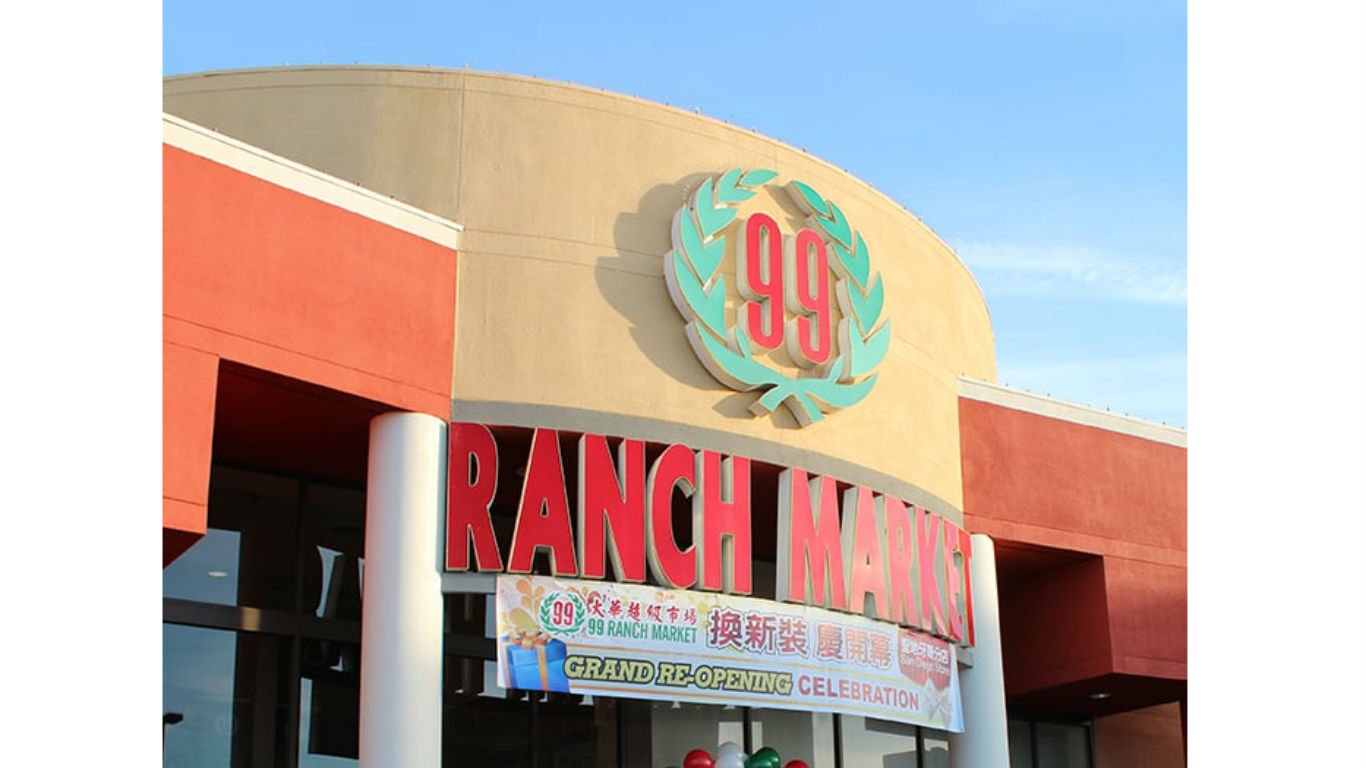
12. 99 Ranch Market
> Location: San Diego, California (population: 1,390,966)
> Total Yelp reviews: 688
> Avg. Yelp rating: 3.5
Green papayas, Chinese lo bok, pork neck bones, mantis shrimp, milk fish, lychee or longan in syrup, pickled lettuce…In the San Diego area, the 99 Ranch Markets are the place to come for Asian ingredients — as well as the more usual supermarket fare. This particular store, wrote one woman on Yelp, “instantly grabbed my heart when I saw a 20 foot long shelf set of different types of soy sauce. Pure heaven!!!” Another local wrote “Can’t think of any cons.”
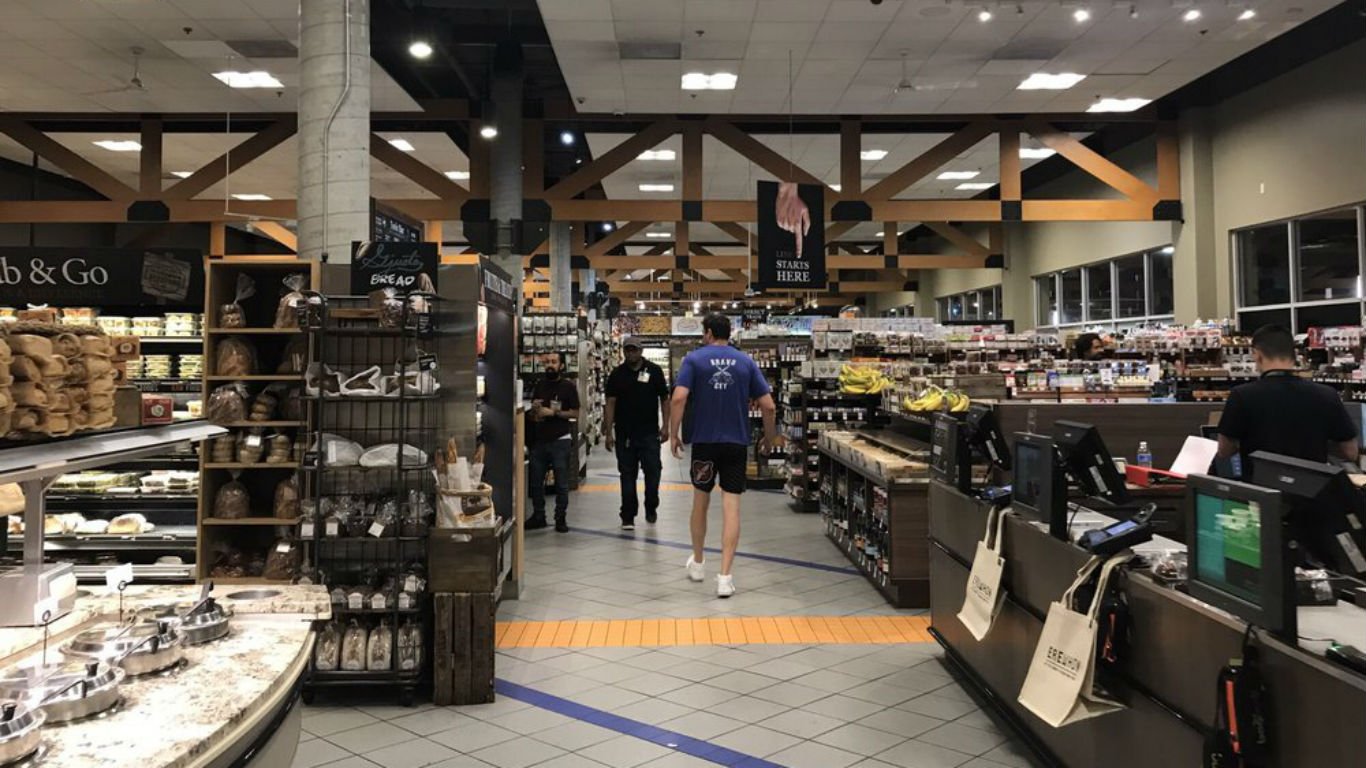
11. Erewhon Market
> Location: Los Angeles, California (population: 3,949,776)
> Total Yelp reviews: 712
> Avg. Yelp rating: 4.0
“We strive to sell only the purest, ethically and sustainably produced foods, wellness and beauty products, and household items,” say the owners of this small Southern California chain. To say that people love it would be an understatement, judging from some comments on Yelp. “Literally wishe I could move in and never leave,” wrote one woman. “I have a special fondness (or obsession?) for Erewhon,” said another. “I’m happy to give Erewhon all my money,” noted a third.
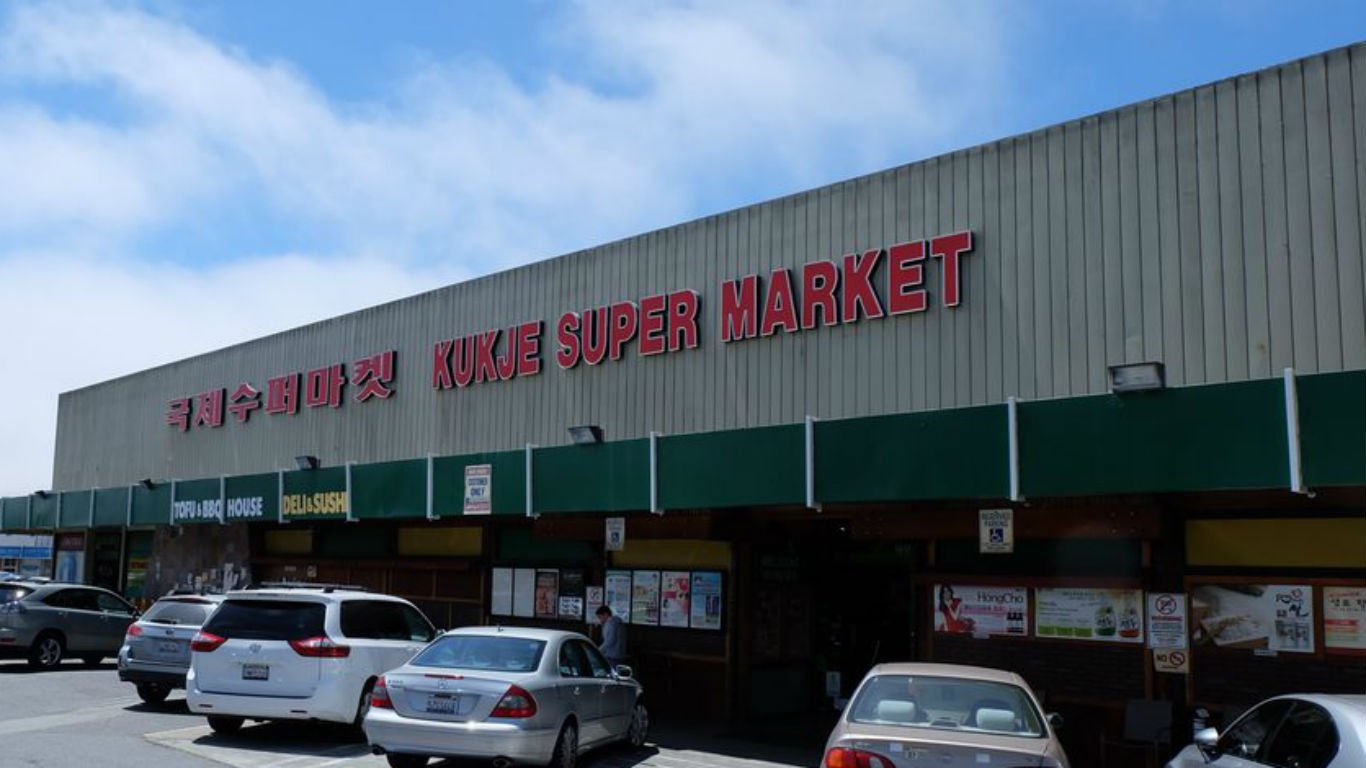
10. Kukje Super Market
> Location: Daly City, California (population: 106,480)
> Total Yelp reviews: 718
> Avg. Yelp rating: 4.0
Kukje stocks a full line of housewares — for bedroom and bathroom as well as kitchen — in addition to an array of produce, including Asian specialty items, farmed fish imported from Korea, various cuts of meat, and other Asian and American foods. “Go here and get all of your Asian (especially Korean) groceries and snacks,” advised one Yelper.
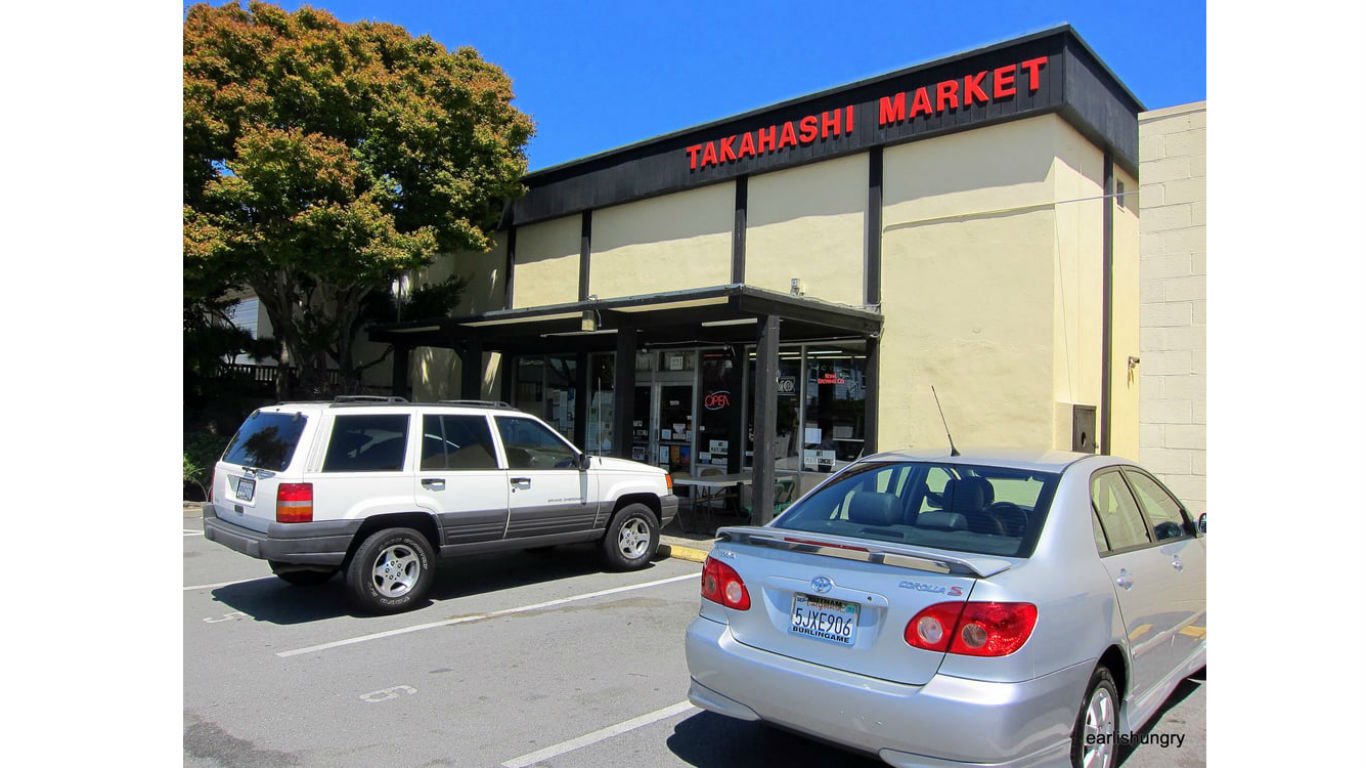
9. Takahashi Market
> Location: San Mateo, California (population: 103,500)
> Total Yelp reviews: 760
> Avg. Yelp rating: 4.5
Founded by Japanese immigrant Tokutaro Takahashi in 1906 and still family-owned and -operated, Takahashi sells a complete line of Japanese, Chinese, Korean, Filipino, and Thai groceries, both fresh and packaged. It also specializes in Hawaiian foods, importing ingredients like poi (taro paste) every week and offering island-style plate lunches — loco moco, Spam musubi, kalua pork, and the like.
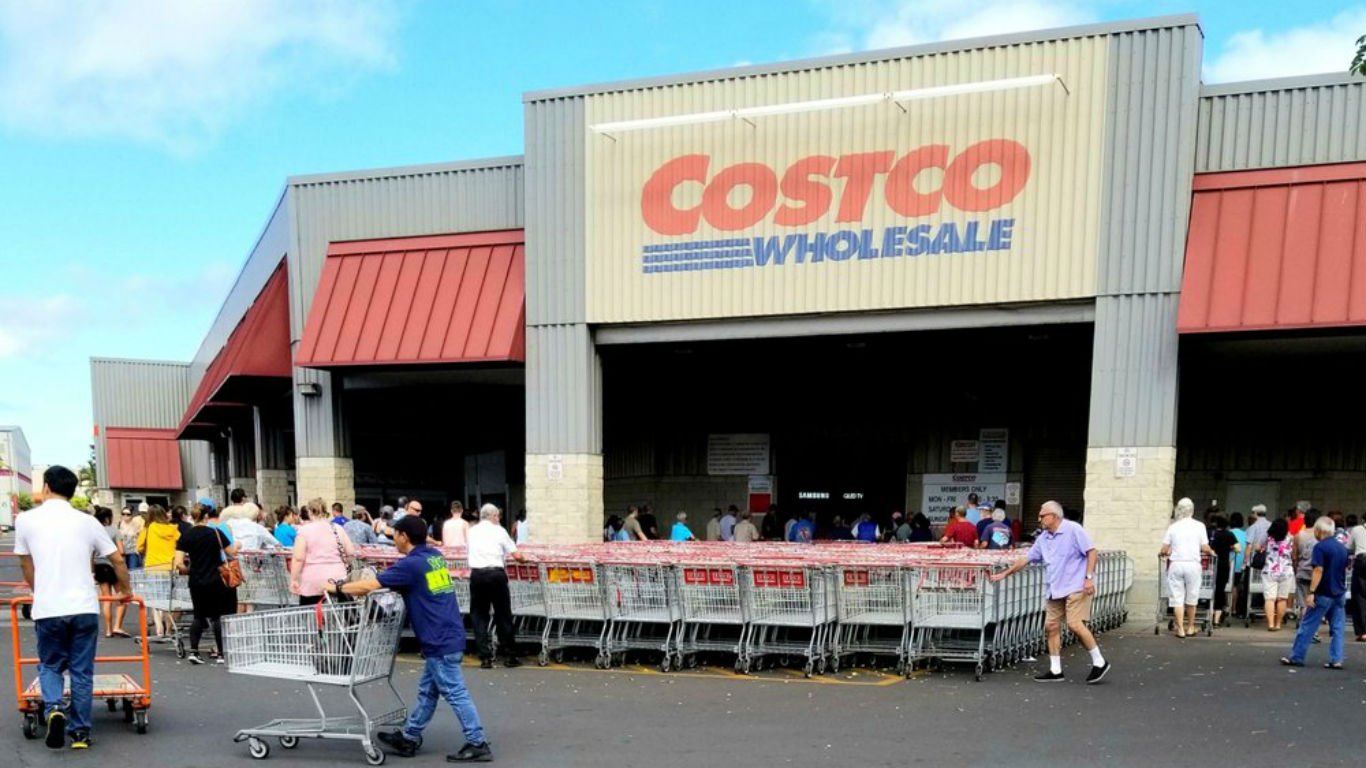
8. Costco
> Location: Honolulu, Hawaii (population: 351,792)
> Total Yelp reviews: 811
> Avg. Yelp rating: 3.5
Like its competitor Walmart, Costco, established in Seattle in 1983, sells a huge array of merchandise, of which food and drink is only a part. Unlike Walmart, it is open to dues-paying members only. There are well over 500 of the stores in the U.S., including two in Honolulu. In its Iwilei location, as at all Costcos, there is a full range of packaged food products as well as fresh produce, meats, and baked goods.
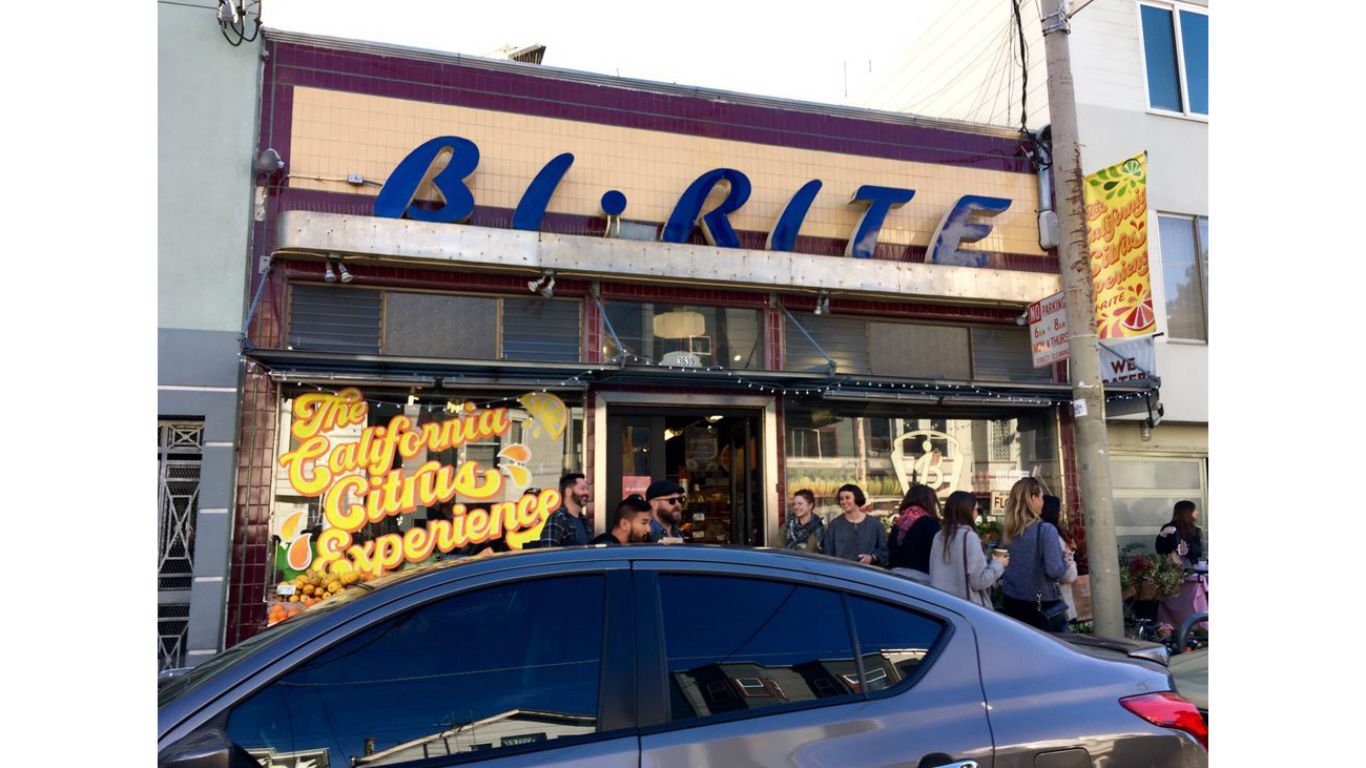
7. Bi-Rite Market
> Location: San Francisco, California (population: 864,263)
> Total Yelp reviews: 919
> Avg. Yelp rating: 4.5
From its display of locally and organically grown flowers to its premium produce (some from its own three-acre farm) to the handmade ice creams from its newly reopened Creamery, Bi-Rite wins plaudits from San Franciscans. “Small but mighty,” said one Yelp reviewer.
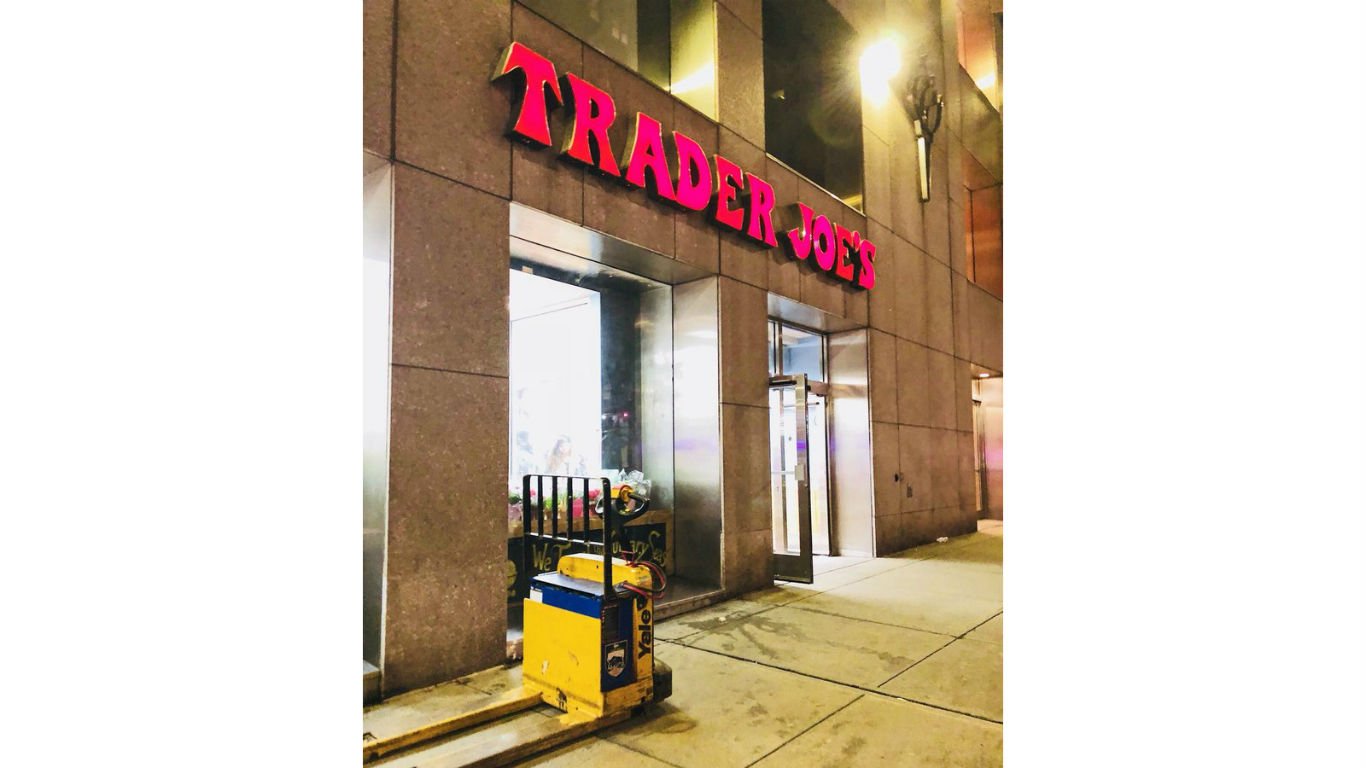
6. Trader Joe’s
> Location: New York, New York (population: 8,560,072)
> Total Yelp reviews: 962
> Avg. Yelp rating: 3.5
Founded in Pasadena, California, in 1967, Trader Joe’s is famous for its Hawaiian-shirt-sporting employees and its low-priced groceries and prepared and frozen foods — including many under its own private labels — as well as for its discount wines (including the famous “Two-Buck Chuck”). This 15,000-square-foot outpost on East 14th Street (including the next-door wine shop) opened in 2006, marking TJ’s entry into the New York City market. There are now nine of the stores in New York City (including wine shops) and almost 500 across the country.
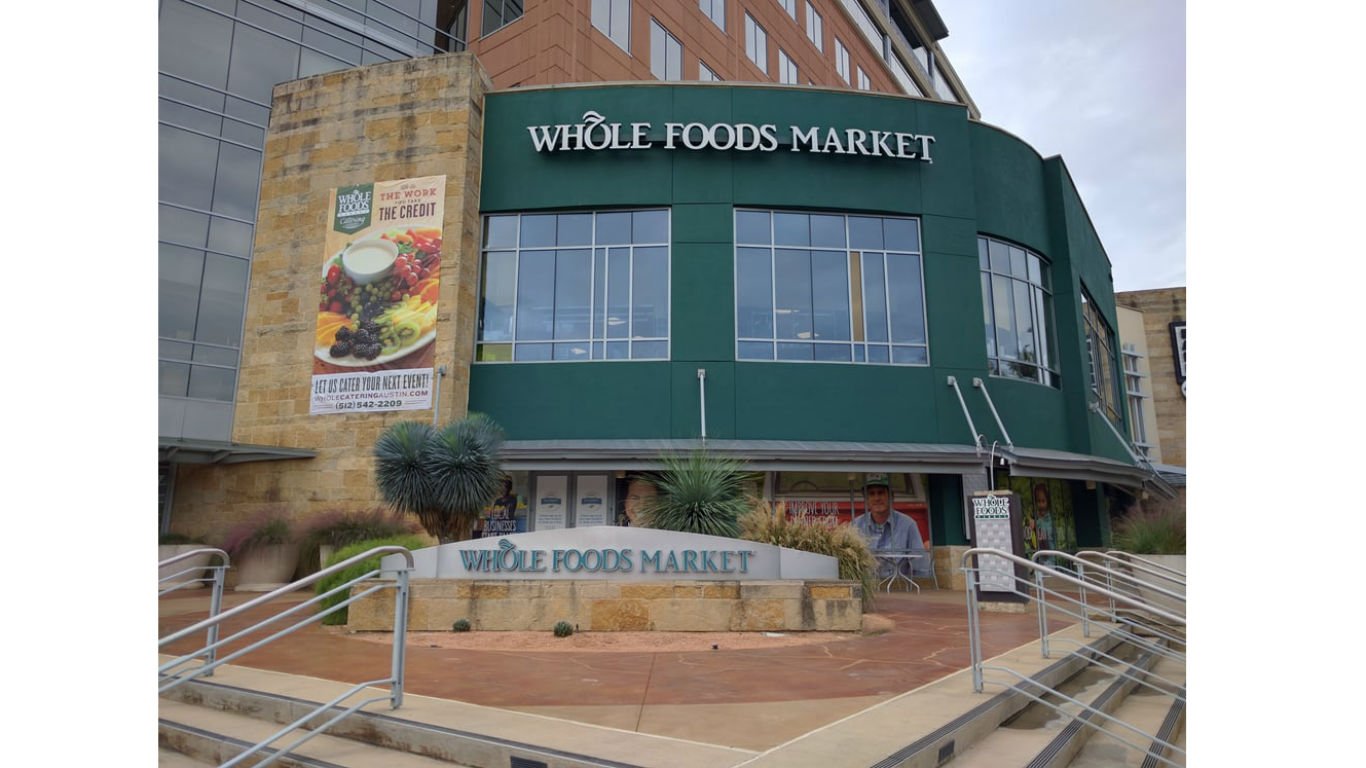
5. Whole Foods Market
> Location: Austin, Texas (population: 916,906)
> Total Yelp reviews: 1,198
> Avg. Yelp rating: 4.0
Famously bought by Amazon in 2017, Whole Foods started life in this location on Lamar Boulevard in Austin in 1980 — and some fans think the original store is still the best. “I could easily spend a day here,” and “It’s everything that you want & more” are among Yelp comments.
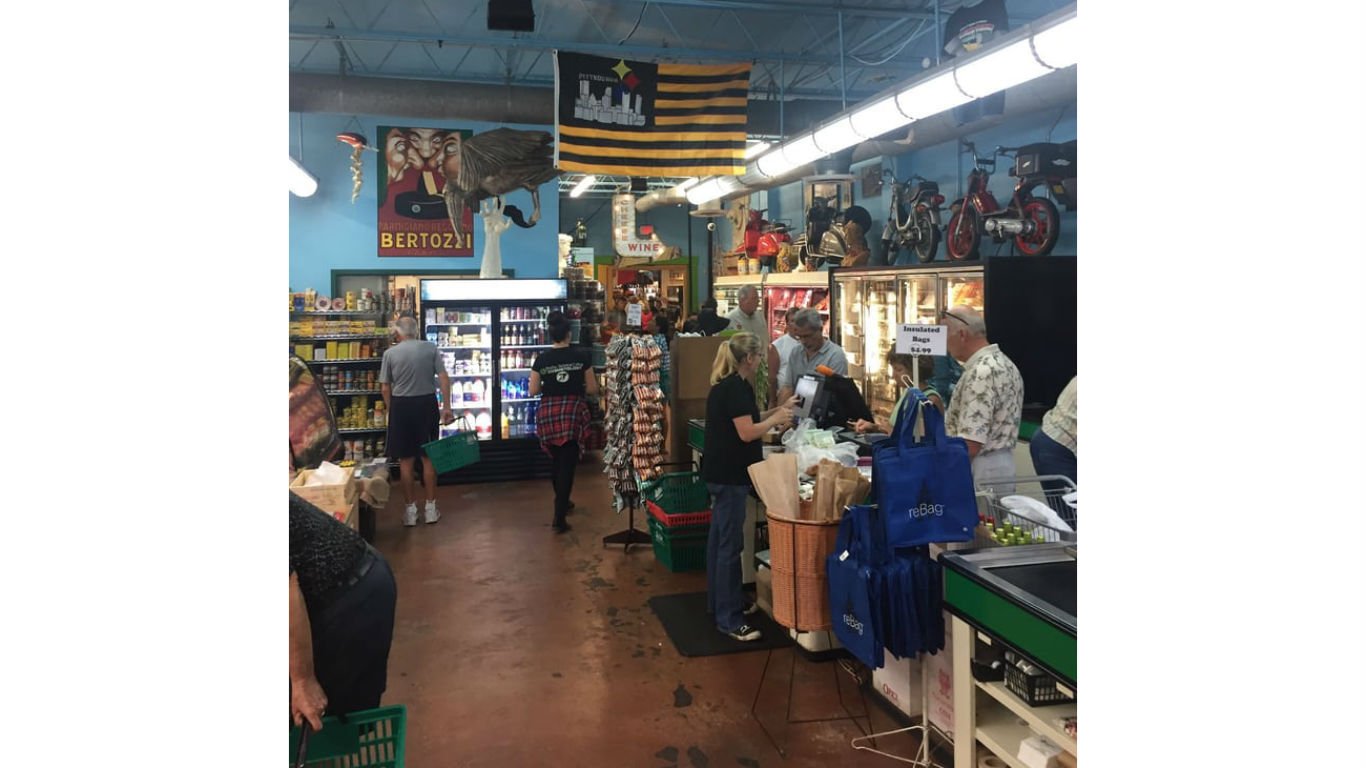
4. Mazzaro’s Italian Market
> Location: Saint Petersburg, Florida (population: 263,255)
> Total Yelp reviews: 1,226
> Avg. Yelp rating: 4.5
Shoppers don’t come here for produce (unless it’s part of the deli sandwiches, salads, and other prepared foods served), but Mazzaro’s offers a large selection of handmade pastas, cheeses, Italian meats, baked goods, and packaged Italian products like olive oil, sauces, and rice.
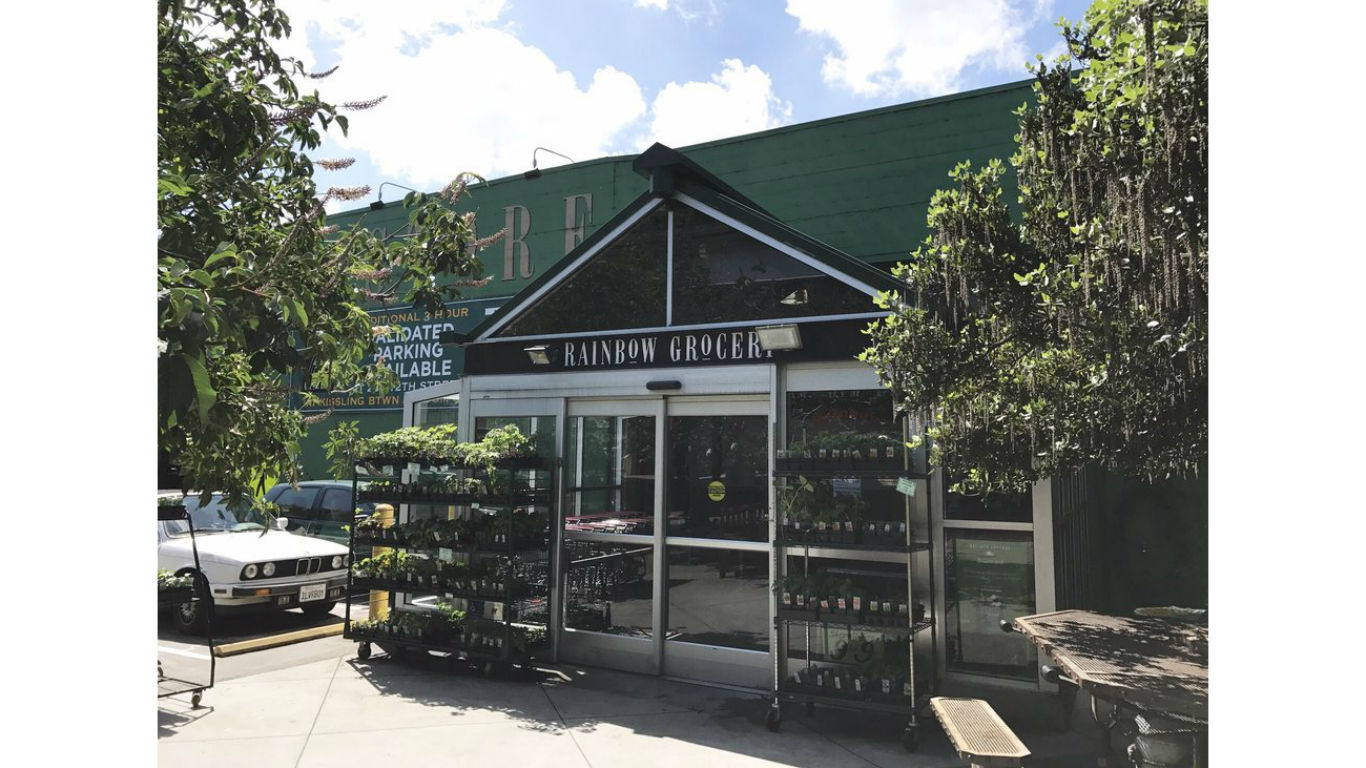
3. Rainbow Grocery
> Location: San Francisco, California (population: 864,263)
> Total Yelp reviews: 1,585
> Avg. Yelp rating: 4.0
An independent worker-owned coop, Rainbow is a full-service market with a special commitment to vegetarian and other local organic products (the only meat they sell is pet food) and to encouraging fair and sustainable practices in every aspect of its business. Shoppers particularly appreciate the bulk section (coffee, nuts, rice, olives and olive oil, herbs and spices, etc.)
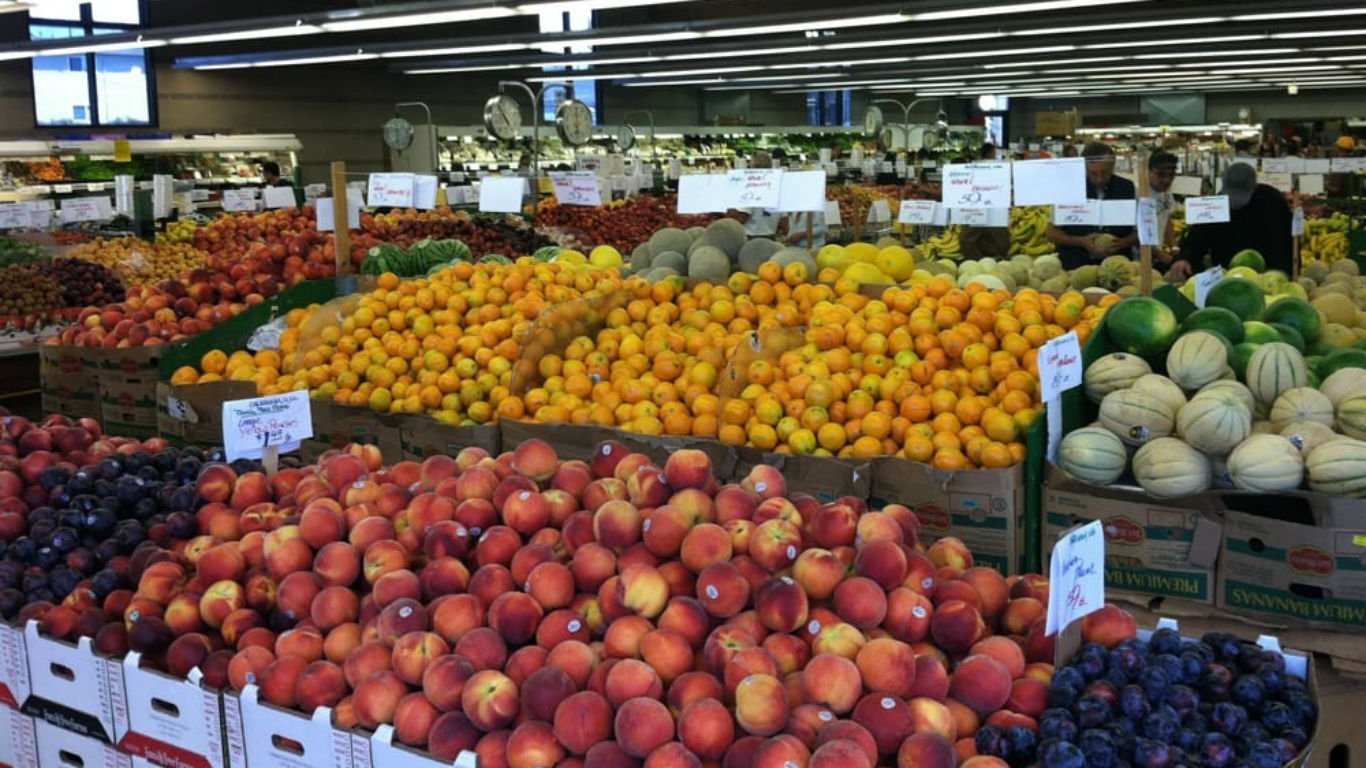
2. Berkeley Bowl Marketplace
> Location: Berkeley, California (population: 120,179)
> Total Yelp reviews: 1,603
> Avg. Yelp rating: 4.0
This full-service market in food-conscious, socially conscious Berkeley sells a good range of organic produce, seafood, meat, flowers, beer and wine, and specialty Asian products. There is also a café, which has become a popular community meeting place.
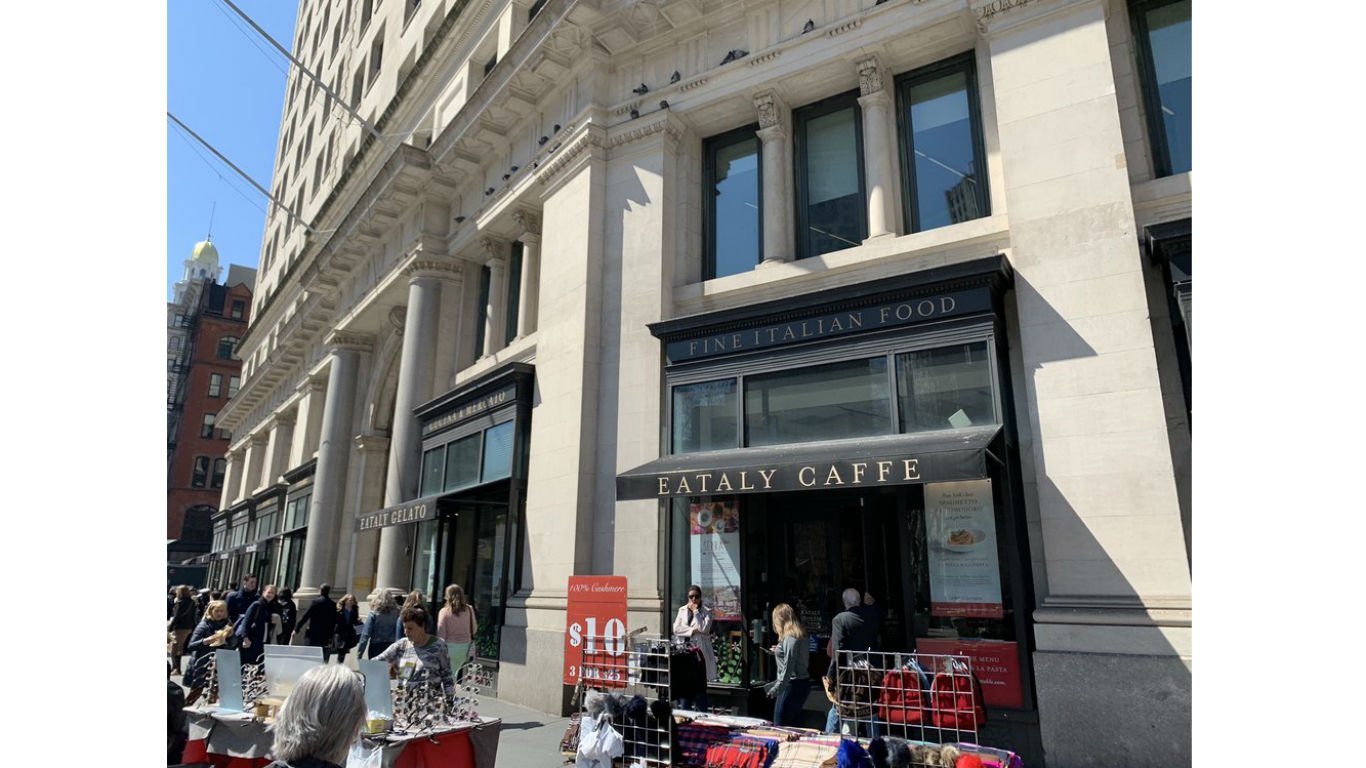
1. Eataly NYC Flatiron
> Location: New York, New York (population: 8,560,072)
> Total Yelp reviews: 5,359
> Avg. Yelp rating: 4.0
The first Eataly opened in Turin in 2007. Today, there are more than 37 locations around the world, including this one, the first in America, launched in 2010. What Eater once described as “a totally bananas marketplace” has a little bit of everything (mostly Italian) — boutique produce, seafood, cheese, a bakery, fresh meats, pasta, olive oil, and more — plus in-store restaurants and food counters.
